Inbox and Environment news: Issue 530
March 13 - 19, 2022: Issue 530
Weeds Strangling Trees At Governor Phillip Park Still Not Cleared; Banksias Now Dying
photo taken this week shows banksias are now submerged in weeds and beginning to die off - visit: $198,859 Allocated To Council For Weed Control - Governor Phillip Park Misses Out (and other much needed areas) - February 13, 2022
Avalon Beach 100 Years 100 Trees - Branching Out
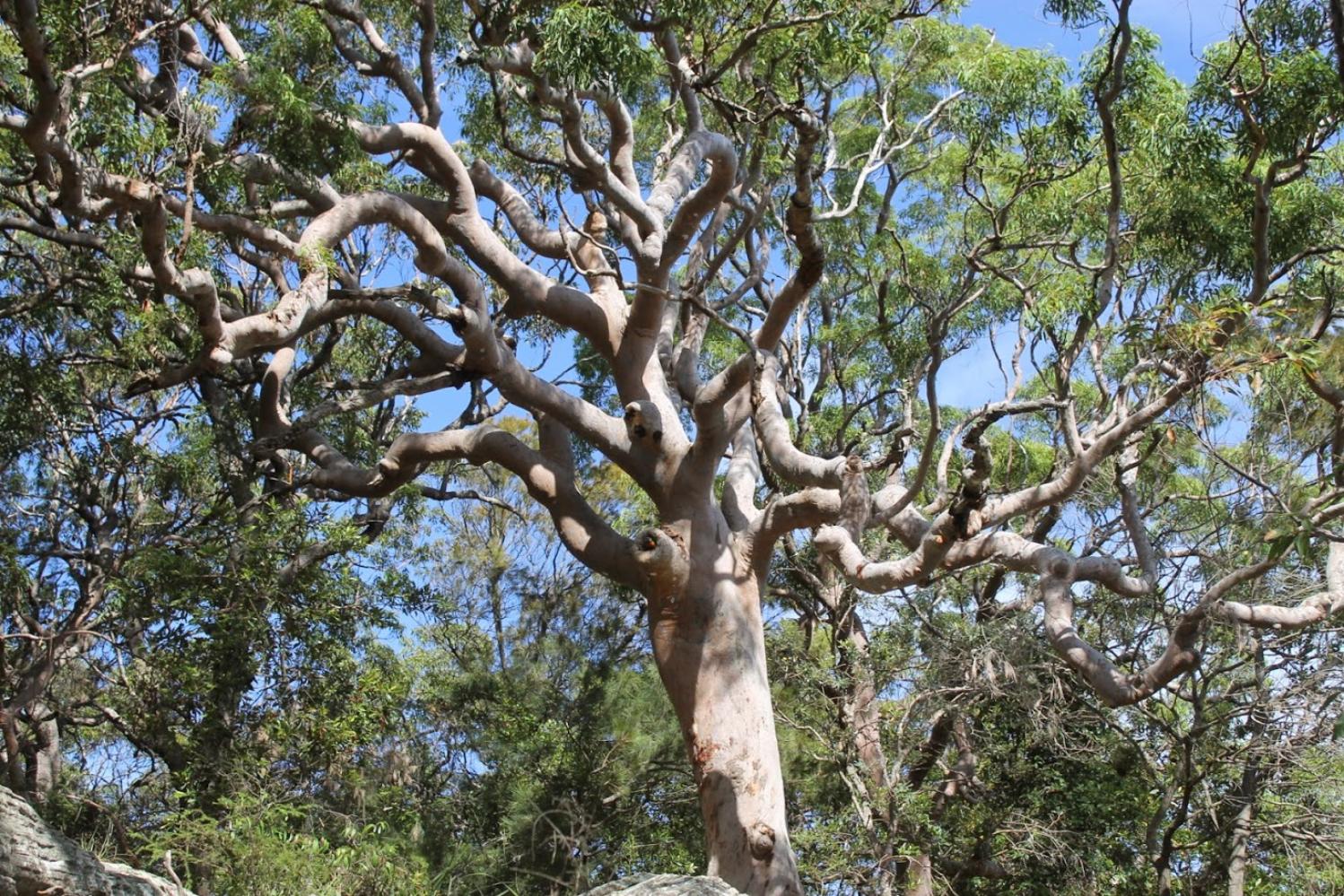
Canopy Keepers is back with another 100 native tubestock to give away later this month as Avalon Beach Centenary celebrations continue - but this time the group is branching out to residents across Pittwater.
CK spokesperson Deb Collins said the group had been delighted with the response to its first offering of 100 trees at the opening of celebrations for the naming of Avalon Beach on December 4, with residents claiming more than 120 young plants.
“This time we're branching out, spreading the love wider, and inviting new Canopy Keepers from Narrabeen to Palm Beach, from The Basin to Scotland Island to join us in strengthening our precious canopy,” Ms Collins said.
“Did you know that for canopy trees and wildlife to thrive they need an understorey and ground cover and that eucalypts grow better with wattles nearby ?
“So whether you have room for a tall, mid storey or ground cover plant, please sign up, then come and meet us on this auspicious autumn day so you can take home a plant to support our canopy.”
Ms Collins asked those interested to please register online using the link below. The deadline for signing up for a tree is noon on March 12 - although some stock will be available on the day.
“Then find us at Dunbar Park to collect your tubestock on Saturday March 19 under our own canopy,” she said.
“We’ll have knowledgeable people on hand to help you with the best choice of tree for your location.”
Canopy Keepers thanks the Northern Beaches Council for its support of this initiative.
To sign up in advance for a tree please go to this link: https://forms.gle/McoPQYybHxXN9fQy6
To make enquiries please email 100trees@canopykeepers.org.au
To learn more about Canopy Keepers go to www.canopykeepers.org.au and sign up for our newsletter.
For general enquires about the March 19 program, please email Ros Marsh at asmallbizminder@bigpond.com
The Sydney Edible Garden Trail 2022
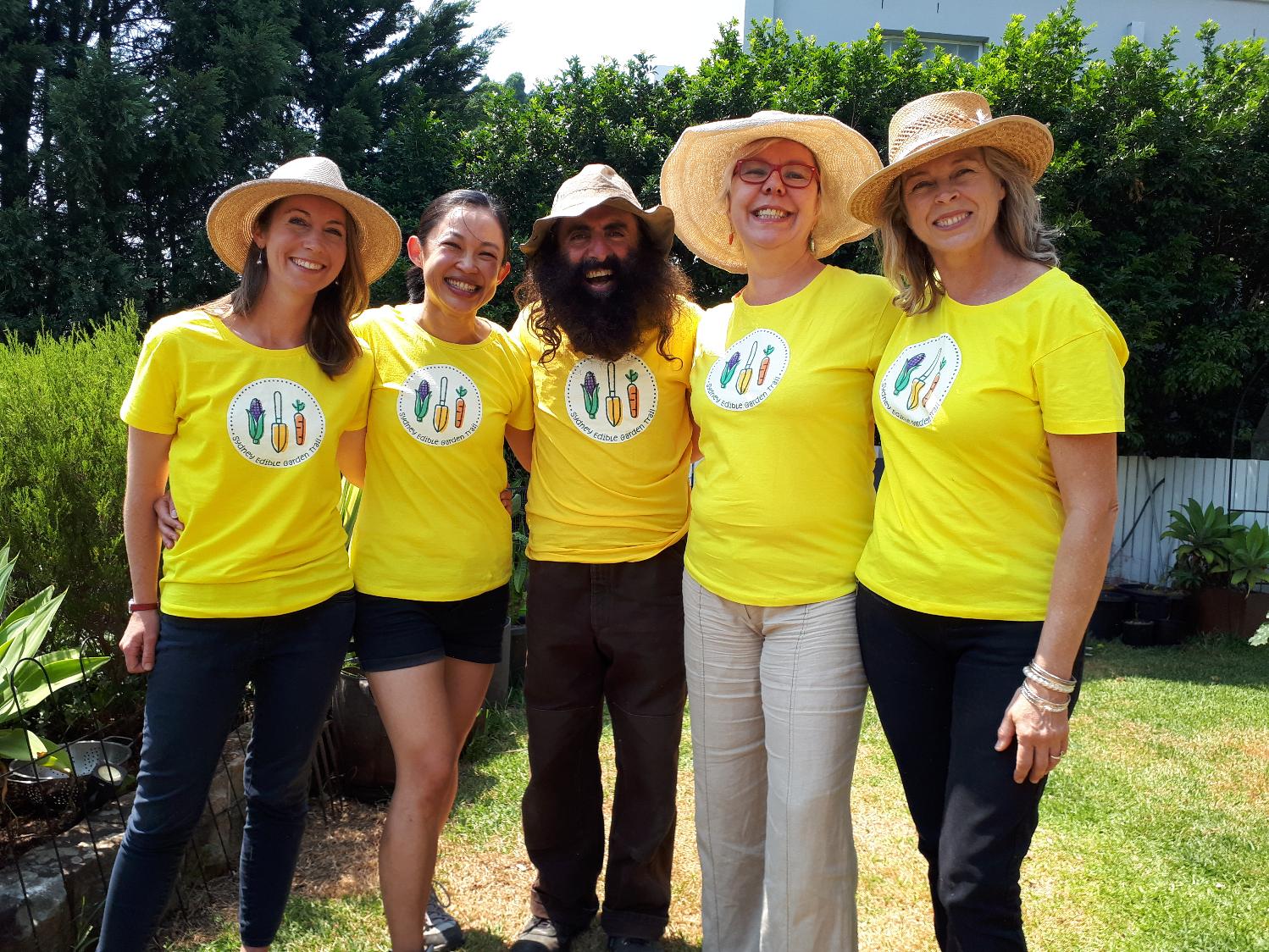
Peek inside some of Sydney’s private backyard fruit and veggie gardens this March, and discover their secrets to living sustainably.
Whether you’re a new or experienced gardener, the best way to learn how to grow juicy fruit and vegetables in your own backyard is to talk to a gardener who’s already doing it. Sydneysiders will have the opportunity to do this over the weekend of 26 & 27 March 2022 when over 50 suburban, community and school gardens will open for the Sydney Edible Garden Trail (SEGT).
Matthew Elphick, one of the garden hosts who participated last year, was inspired to reopen his garden again this year. He’s looking forward to the 2022 trail, saying “It was so wonderful to open last year and have people come through the garden and see how excited they are. You get to see the garden through their eyes, things that you don’t think much about, they find amazing. It’s such a great opportunity to meet like-minded people.”
With the motto “We don’t just grow food, we grow sustainable communities”, SEGT arranges for gardens to open to the public and allocates profits from ticket sales towards building stronger community and school gardens through a grants program with 8 gardens provided with grants in 2021.
This year the trail is extending to the wider Sydney metropolitan area with many new gardens included. Tickets are now on sale at https://sydneyediblegardentrail.com/tickets/
Those in our area listed so far for the 2022 edition of SEGT include:
Newport Community Garden
We are a membership based Community Garden of local neighbours who get together to learn about organic gardening, sustainable living, socialise and have a good time!
NCG has been running for over 8 years and from humble beginnings is now a vibrant, sustainable and inviting space with over 35 garden beds, compost bays, worms farms and native bee hive, green house, water tanks and garden shed.
We grow organic fruits, vegetable and herbs. We cultivate our compost, make our own natural pesticides and grow from seeds saved from our seasonal harvest.
It’s not just hard work, we are very social too and always finish the day with a cuppa and chat with local community members.
In November 2021 Newport Community Garden were announced as one of fifty SEGT GRANT RECIPIENTS 2021.
The grant will be used to attract local birdlife and bees by planting some native bush food plants and others native plants.
Newport Community Garden Profile of the Week
“The glory of gardening: hands in the dirt, head in the sun, heart with nature. To nurture a garden is to feed not just on the body, but the soul.” - Alfred Austin
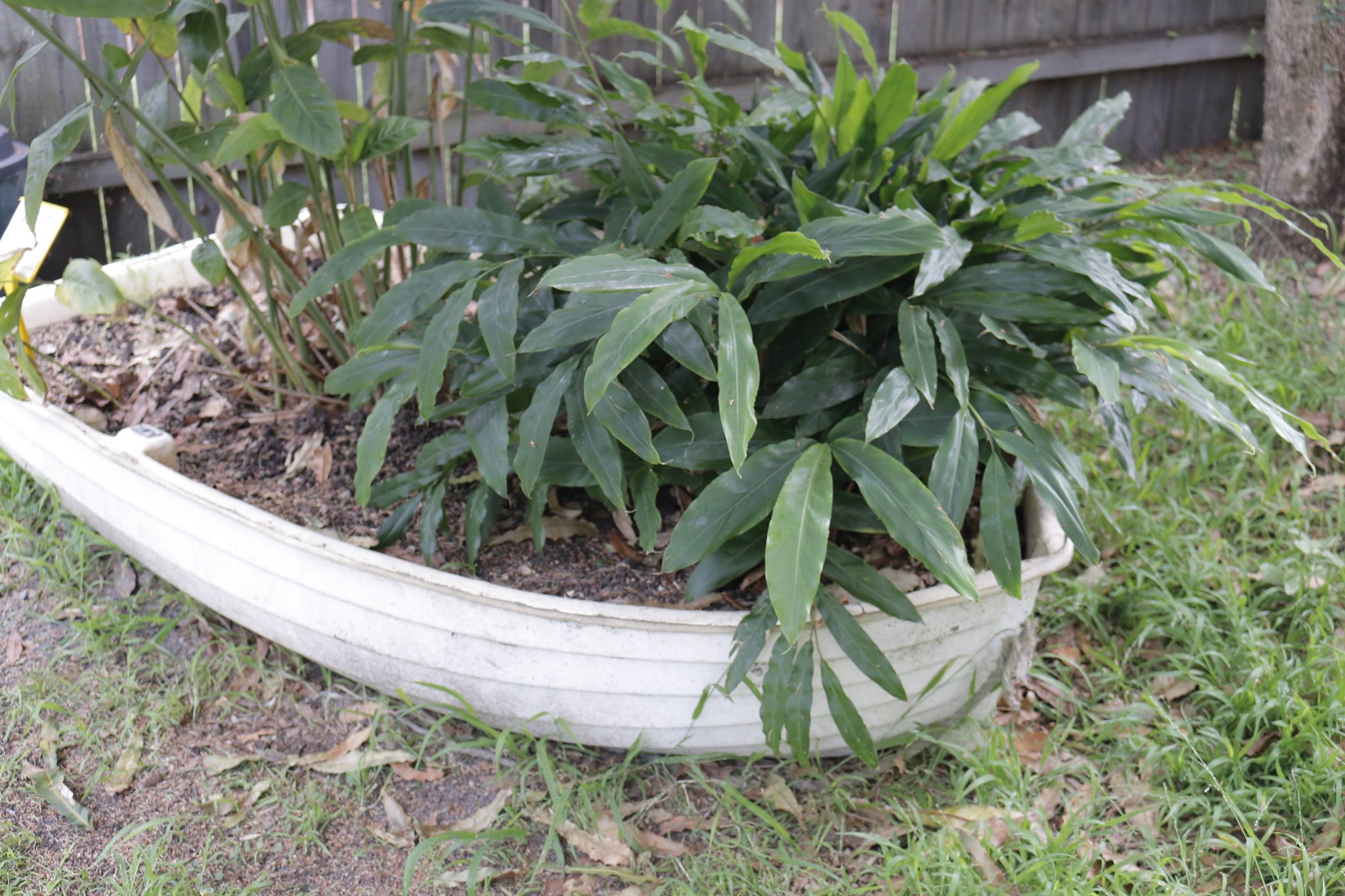
Great reuse of an old boat in the Newport Community Garden
Local Wildlife Rescuers And Carers State That Ongoing Heavy Rains Are Tough For Us But Can Be Tougher For Our Wildlife:
- Birds and possums can be washed out of trees, or the tree comes down, nests can disintegrate or hollows fill with water
- Ground dwelling animals can be flooded out of their burrows or hiding places and they need to seek higher ground
- They are at risk crossing roads as people can't see them and sudden braking causes accidents
- The food may disappear - insects, seeds and pollens are washed away, nectar is diluted and animals can be starving
- They are vulnerable in open areas to predators, including our pets
- They can't dry out and may get hypothermia or pneumonia
- Animals may seek shelter in your home or garage.
You can help by:
- Keeping your pets indoors
- Assessing for wounds or parasites
- Putting out towels or shelters like boxes to provide a place to hide
- Drive to conditions and call a rescue group if you see an animal hit (or do a pouch check or get to a vet if you can stop)
- If you are concerned take a photo and talk to a rescue group or wildlife carer
There are 2 rescue groups in the Northern Beaches:
Sydney Wildlife: 9413 4300
WIRES: 1300 094 737
Please be patient as there could be a few enquiries regarding the wildlife.
Generally Sydney Wildlife do not recommend offering food but it may help in some cases. Please ensure you know what they generally eat and any offerings will not make them sick. You can read more on feeding wildlife here
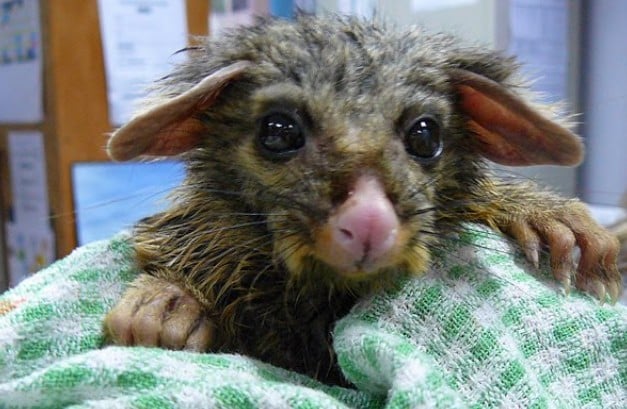
Information courtesy Ed Laginestra, Sydney Wildlife volunteer. Photo: from Esther Andrews.
Aviaries + Possum Release Sites Needed

Australia’s Eucalypt Of The Year Voting Is Open For The 5th Year!
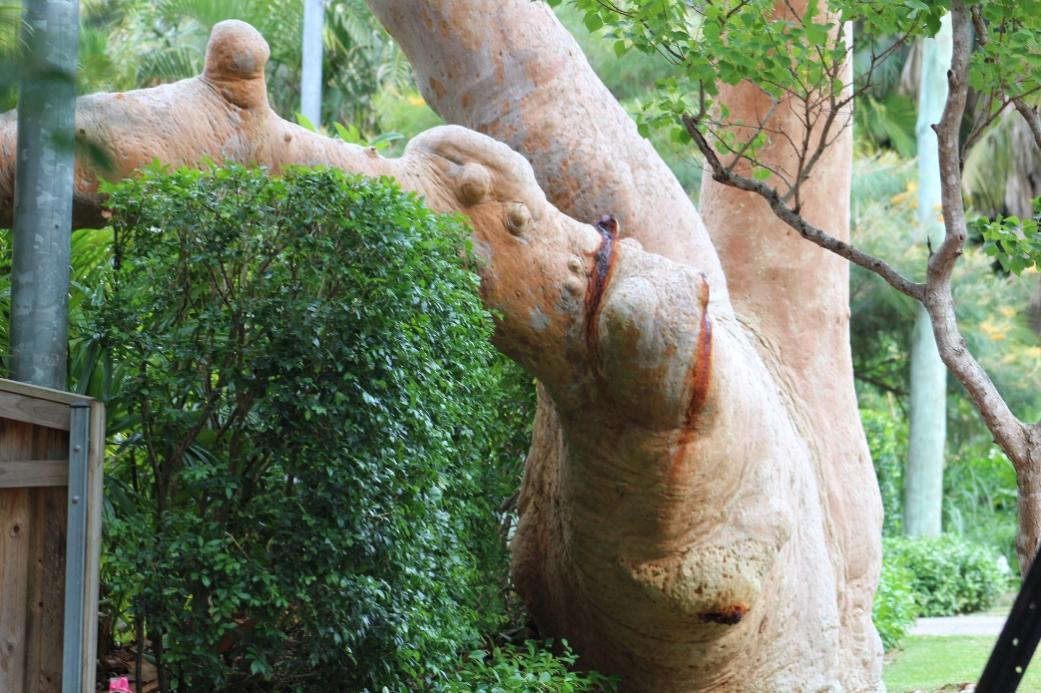
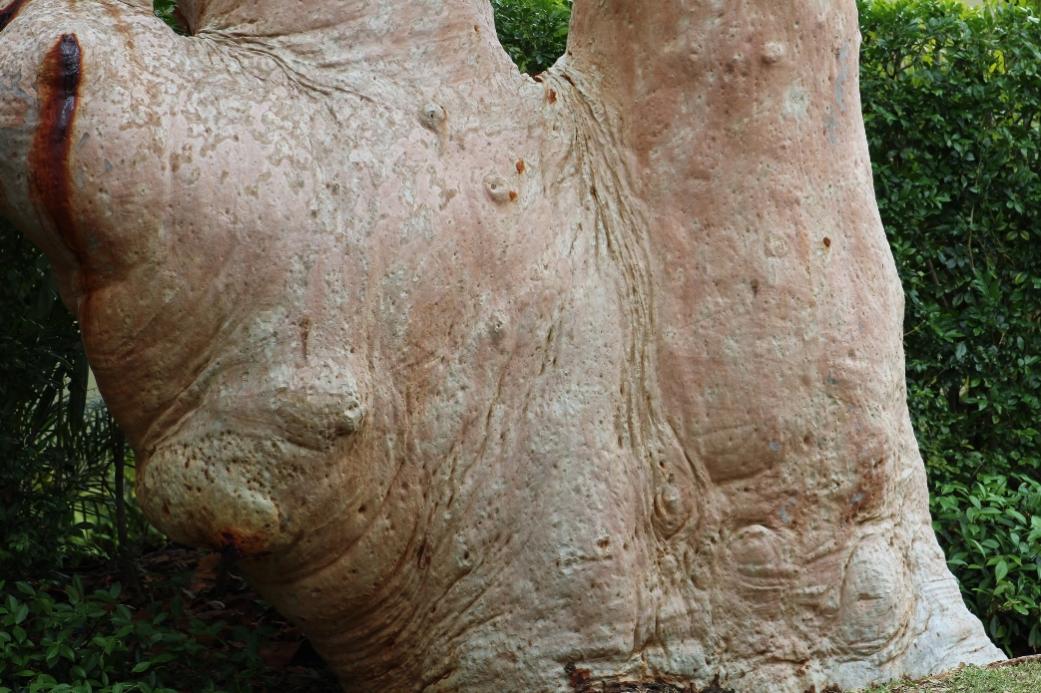
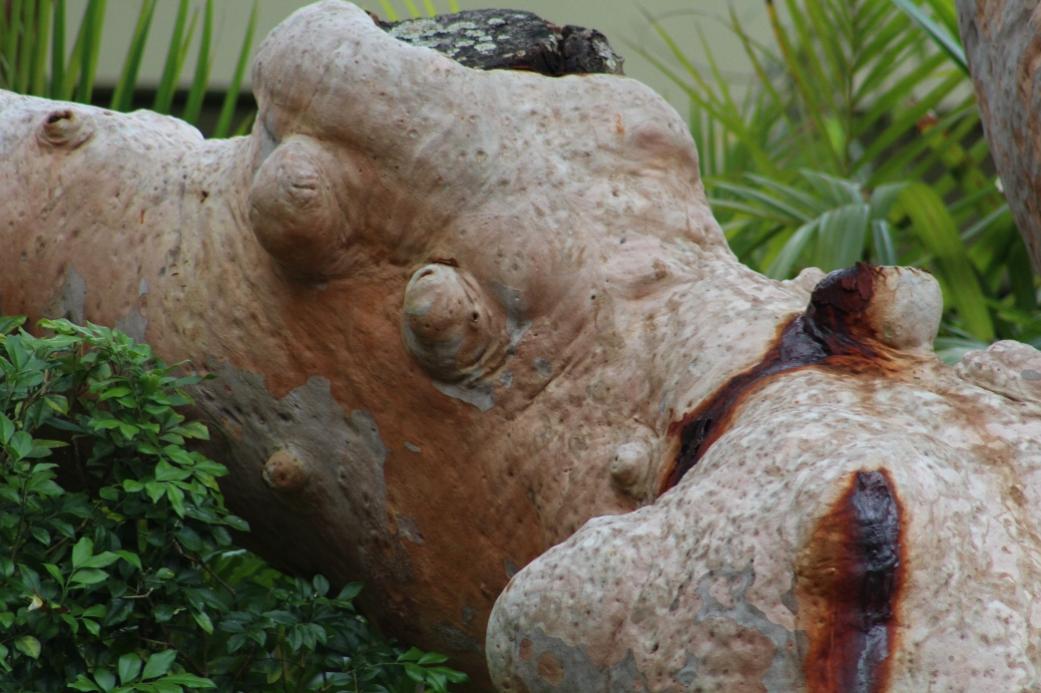
Asparagus Fern Flowering Now: Dispose Of This Weed To Stop The Spread
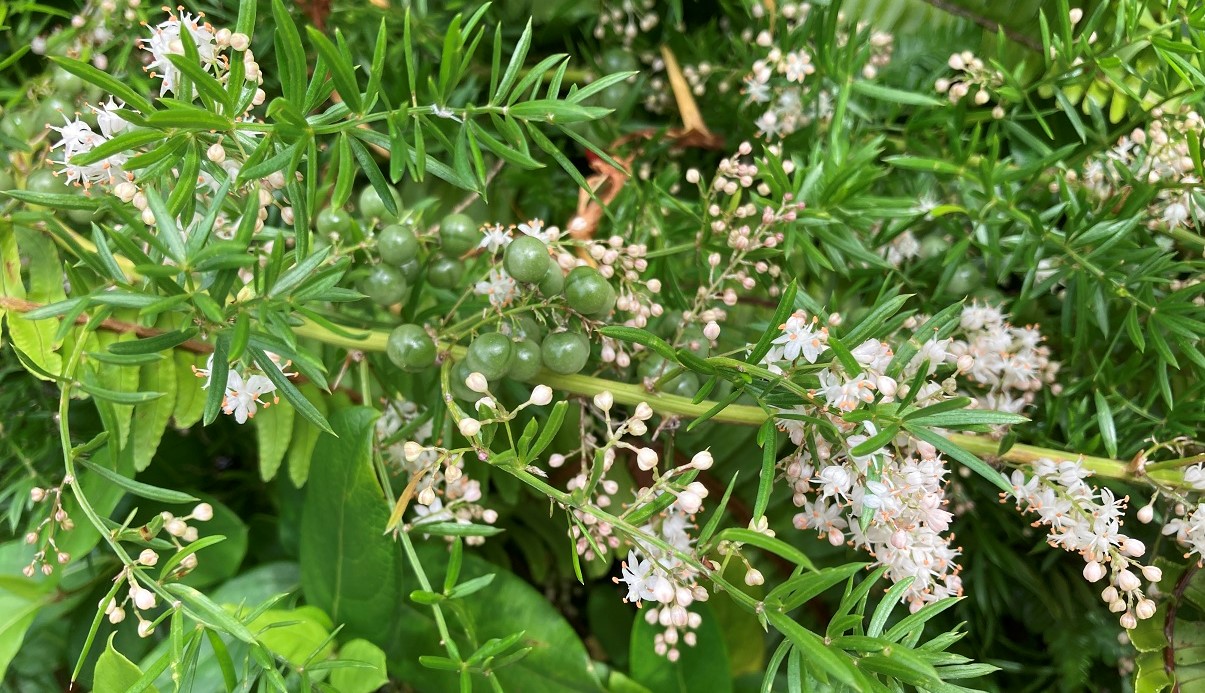
$95 Million Clean Technology Funding To Drive Next Wave Of Net Zero Innovation
March 11, 2022
Scientists and start-ups can now apply for three new grant initiatives offering up to $95 million to foster a world-class innovation sector in NSW clean technologies.
Treasurer and Energy Minister Matt Kean said the grants will turbo charge the research, development and commercialisation of innovations needed to ensure New South Wales can achieve net zero by 2050.
'Boosting emerging innovations today will help establish NSW as a global leader in low-emissions products and services over the next decade,' Mr Kean said.
'These grants will support laboratories and entrepreneurs to help new business ideas get traction in both Australia and overseas, and grow the NSW economy.'
The three Clean Technology grant initiatives include:
- $45 million for infrastructure, such as world-leading innovation facilities, to accelerate research, development and commercialisation of clean technologies
- $10 million to help equip organisations such as start-ups and entrepreneurs with the necessary skills and resources to succeed commercially
- $40 million to drive the scaling up of clean technologies that will support the decarbonisation of high emitting and hard to abate sectors.
'We’re partnering with industry and researchers to target three key emissions areas that will drive a clean industrial revolution for future generations,' Mr Kean said.
'They include electrification and energy systems, land and primary industries, and power fuels including hydrogen.'
The Clean Technology Innovation stream is one of three focus areas within the $1.05 billion Net Zero Industry and Innovation Program, which in February was increased by $300 million to $1.05 billion to 2030.
For more information, visit the Clean technology innovation page on the Energy Saver website.
Opportunity To Obtain Water Access Licences
NSW Department of Planning & Environment
The opportunity to purchase water access licences across 55 different water sources within NSW will provide added water security to existing operations, allow additional water for new or expanding business and help improve the economies of regional towns and communities.
Chief Operating Officer, NSW Department of Planning and Environment, Graham Attenborough said the water access licences, which are spread across coastal and Murray-Darling Basin water sources, would be offered through a tender process.
“Interested parties will have the chance to buy access licences in some regulated river, unregulated river and groundwater sources not included in previous controlled allocations,” Mr Attenborough said. “The water offered in this controlled allocation comes from licences that were surrendered to the Minister for various reasons, for example where a licence holder gives up a licence because they no longer need it.”
This new controlled allocation order made on 4 March is the first controlled allocation order made in 2022 and separate from the controlled allocation order for groundwater in October 2021 that is currently being implemented.
A minimum price has been set for shares in each water source. The shares in these water sources will be offered in order of highest to lowest bids at or above the minimum price until all shares are exhausted or all bids are satisfied.
“Tenders for water access licences in previous controlled allocation processes have attracted diverse interest, ranging from various agricultural industries to mining companies,” Mr Attenborough said.
“The release of these shares will provide another opportunity for new or expanding businesses in regional and urban areas to buy water, which is important given that opportunities to buy water through the trading market are limited in many areas of NSW.”
Mr Attenborough continued, saying controlled allocations of groundwater began in 2009 and have continued to allow additional sustainable access to water for urban, regional and rural industries and communities.
This upcoming controlled allocation will also include surface water, providing more opportunities to meet the evolving needs of businesses and communities,” said Mr Attenborough.
The NSW Department of Planning and Environment invites interested parties to register their interest during the registration of interest period, which will run from 18 March to 18 April 2022.
Further information on the process, including details on how to register an expression of interest, can be found on the department’s website at: www.industry.nsw.gov.au/water/allocations-availability/controlled
The maps are available at: https://www.industry.nsw.gov.au/water/licensing-trade/licences/controlled/register-your-interest
The registration of interest period opens 18 March 2022 and closes at 5:00 pm on 18 April 2022. Late applications will not be accepted.
For more information visit the registration of interest timeline.
Using War To Call For Acland Coal Mine Expansion A New Low For Project’s Backers
March 8, 2022
Using Russia’s sickening invasion of Ukraine to call for the expansion of the New Acland coal mine is a new low for the project’s supporters, according to Oakey Coal Action Alliance and Lock the Gate Alliance.
If built, the New Acland Stage 3 expansion would destroy some of the best farming country in Queensland, put at risk the production of at least 10 million litres of milk each year from local dairies, and render many farming bores in the district useless.
It would require 3.5 million litres of water each day, resulting in a 47 metre water drawdown impacting over at least 1200 square kilometres of prime agricultural land.
Oakey Coal Action Alliance secretary Paul King said, “The short-sightedness from the likes of Keith Pitt who want to see this coal mine expansion built is breath-taking, even for politicians.
Mr. King's statement comes in response to a report in the Australian Financial Review where it is stated the Minister has ''slammed Queensland Premier Annastacia Palaszczuk for standing in the way of coal mines that could be helping desperate European nations wean themselves off Russian coal at a time of record high prices for Australian fossil fuels.'' and goes on to state Resources Minister Keith Pitt said ''the energy crisis unleashed by Russia’s “unacceptable” invasion of Ukraine should also be a wake-up for financiers who have blackballed Australia’s coal industry ...''
“South East Queensland is only just beginning to recover from record flooding that was almost certainly made worse due to the climate crises, which in turn is driven by humanity’s burning of fossil fuels.
“There has never been a better time to hasten the fair transition towards renewable energy.” Paul King stated
Lock the Gate Alliance Queensland spokesperson Ellie Smith said, “Darling Downs farmers must not be collateral damage in Keith Pitt’s pro-fossil fuel posturing.
“We sincerely hope the Queensland Palaszczuk Government recognises this for what it is - sickening war opportunism from the backers of New Acland.
“The Palaszczuk Government must keep its promise. The mine’s impacts on groundwater still need to be properly assessed and any proposed new conditions should be made public before a mining lease is issued. The independent assessment of this project must be allowed to proceed.
“New Acland coal mine shouldn’t be reopened. This area is amongst the best 1.5% of farmland in the state and it produces milk and beef to feed Australia.
“We'd like to see Premier Annastacia Palaszczuk protect the local community and reject the groundwater licence and the mining lease, and let locals move on with their lives.”
Assets Of Intergenerational Significance Conservation Action Plans Consultation
- 77 threatened plant species, including the previously declared Wollemi pine
- 30 threatened animal species
- 6 locally extinct mammals which have been reintroduced to 3 of the feral predator-free fenced areas
- 1 newly described species, the Wollumbin pouched frog recently discovered in Wollumbin National Park.
- the environmental and cultural values of the land
- key risks to those values
- management activities to address and mitigate the risks – such as dedicated feral animal control or fire management
- actions to measure and report on the health and condition of the declared value.
Endangered Species Live Alongside Hunter Gas Pipeline: Review Of Project Called For
March 9, 2022
Environment Minister Sussan Ley needs to give endangered animals along the Queensland-Hunter Gas Pipeline route a fighting chance and haul the project in for the highest assessment possible in light of new evidence, according to Lock the Gate Alliance.
Lock the Gate Alliance recently wrote a letter to Minister Ley, highlighting new evidence showing the presence of the critically endangered Regent Honeyeater, the endangered Booroolong Frog, and the threatened Spotted Tailed Quoll, among others, along the pipeline’s 620km NSW section.
Worryingly, these species weren’t even considered when a decision was made in late 2008 not to assess the project under the Environment Protection and Biodiversity Conservation Act. What’s more, due to the nature of the Act, the now endangered koala, while present along the route, cannot be legally considered because it wasn’t a listed species when the original decision was made.
This week it has been reported that the Minister is re-considering the decision not to assess the project under the Act, and Lock the Gate Alliance spokesperson Georgina Woods said it was the bare minimum that needed to occur.
She said the same report that recently found evidence of the endangered species also found that if built, the pipeline would severely impact 31 Aboriginal Cultural Heritage sites along its route, and rip up some of the nation’s best cropping country.
“In a fair and just world, a project as destructive as the Hunter Gas Pipeline would never be permitted,” she said.
“Instead, we now find ourselves in a bizarre situation where a project approved 13 years ago, but not yet built, could go ahead without undergoing a thorough environmental assessment.
“With Santos recently receiving approval to build its polluting Narrabri gasfield, the threat of this pipeline being built is real.
“The Morrison Government must reassess the impacts of the Hunter Gas Pipeline, given it was approved 13 years ago and new information has emerged regarding its likely significant impact on iconic and threatened species like the Regent Honeyeater.
“Relying on an assessment that is now nearly a decade and a half old is a disgrace, and Minister Ley must step up and demand an Environmental Impact Statement is prepared that addresses all the threats the Hunter Gas Pipeline poses."
Federal Listing Of Yellow-Bellied Gliders As Threatened Is Another Reason To End Native Forest Logging In NSW
March 7, 2022
The listing of the yellow-bellied glider in southeast Australia as vulnerable to extinction [1] is another reason to end native forest logging in NSW.
Federal Environment Minister Sussan Ley has listed the iconic species as vulnerable on the advice of the Federal Threatened Species Scientific Committee.
The listing of the yellow-bellied glider comes just weeks after the minister increase the threatened status of the koalas in NSW and Queensland from “vulnerable” to “endangered”. [2]
“Thanks to decades of unsustainable logging and land clearing, we have pushed two of our most adorable forests species to the brink of extinction,” Nature Conservation Council Chief Executive Chris Gambian said.
“If we do not end native forest logging and land clearing now, we will lose these species for ever.”
The committee found the 2019-20 Black Summer bushfires, which destroyed more than 5 million hectares of forests, were a key factor that had increased risks to both species, along with land clearing, habitat fragmentation, and climate change.
“The NSW Government is still logging forests that were smashed by the Black Summer bushfires or forests that have become precious refuges for koalas and gliders that fled the flames,” Mr Gambian said.
“The native forest division of the NSW Government’s logging company, Forestry Corporation, lost $20 million last financial year.
"Effectively, taxpayers are subsidising the extinction of our koalas and gliders. It’s morally reprehensible.”
The NSW National Parks and Wildlife Service says yellow-bellied gliders are an indicator species, and says protecting its habitat will protect a whole host of other species.
"Protection of the Yellow-bellied Glider can provide for conservation of a wider suite of forest values. Large home range requirements, naturally low densities, a sedentary habit and specialised foraging and denning requirements indicate that the species is sensitive to land use practices and management activities. This has led to the Yellow-bellied Glider being identified as a possible indicator or umbrella species for effective management of forest-dependent fauna (Milledge et al. 1991; Kavanagh 1991; Goldingay and Kavanagh 1993; Kavanagh and Bamkin 1995)." [4]
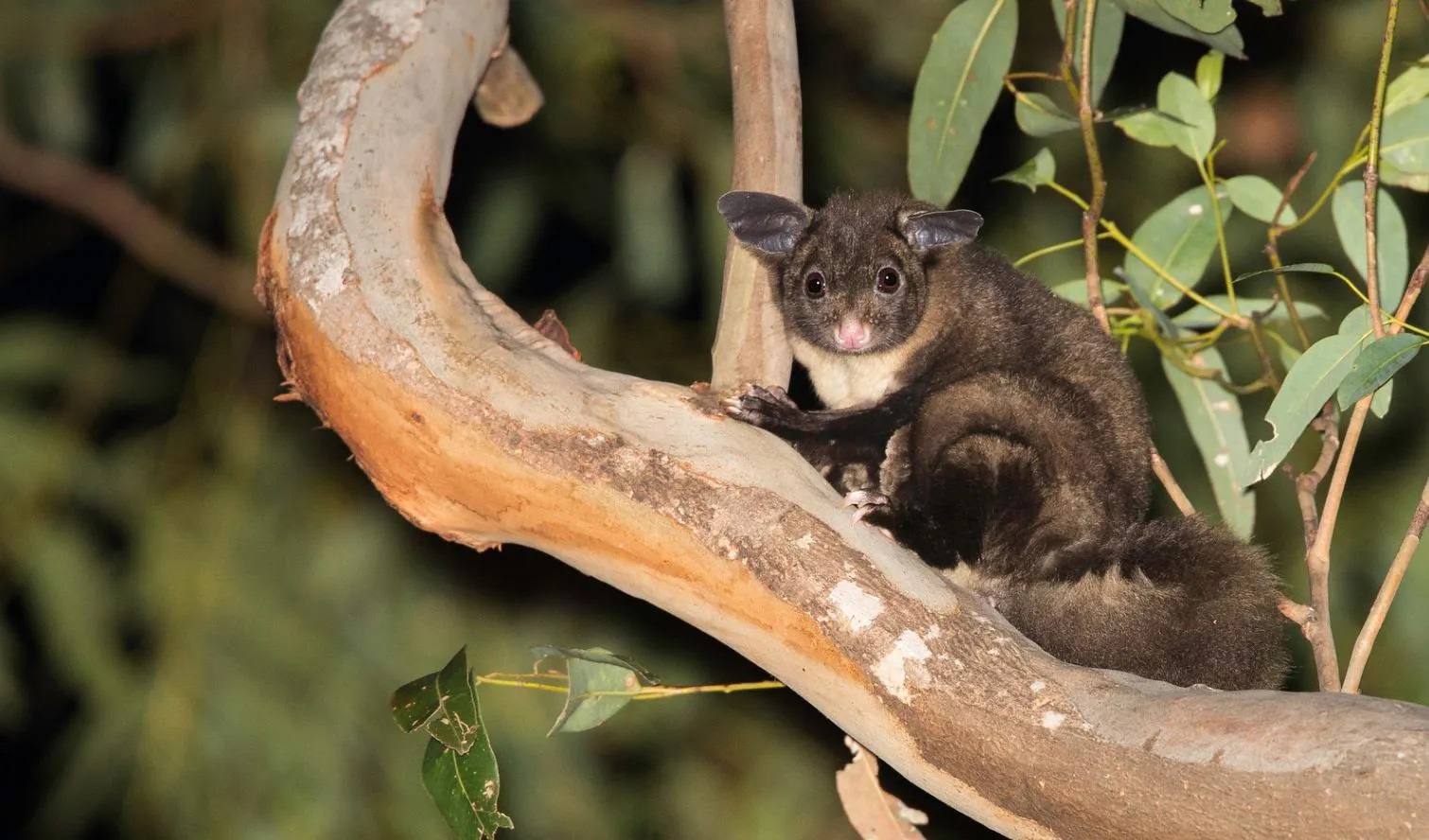
A yellow-bellied glider. Image credit: Matt Wright
References
- https://www.environment.gov.au/cgi-bin/sprat/public/publicspecies.pl?taxon_id=87600
- Koalas officially an endangered species in NSW, Queensland - February 2022
- Forestry Corp’s annual report for last year shows the native forest division lost $20m. See the table on page 13 of the report.
- See page 10. Approved Recovery Plan Yellow-bellied Glider, NPWS, 2003.
Secret Natural Resources Commission Review Of Native Forestry Codes Must Be Made Public
The Nature Conservation Council calls on NSW Government to release the Natural Resources Commission (NRC) review of draft private native forestry codes when it reports later this month.
It was revealed at Budget Estimates on Tuesday March 1st [1] the NRC was reviewing the proposed PNF codes at the centre of the Coalition’s koala wars last year. It was also revealed the government intends to keep the NRC report secret.
“The NSW Government must make the NRC review public — the people have a right to know what impact these codes will have on wildlife, carbon stores and water supplies,” Nature Conservation Council Chief Executive Chris Gambian said.
“This week’s UN report warned NSW forests face unprecedented threats from climate change [2] yet these forests also have a significant role to play in slowing and reversing climate change.
“This makes management of the total forest estate — public and private — a matter of vital public interest.”
Mr Gambian said the PNF codes would have a significant bearing on Australia’s ability to reverse forest loss and land degradation by 2030, as it committed to do at last year’s climate conference, [3] and save koalas from extinction.
“The public must have confidence the proposed codes do not undermine the $193 million koala strategy the government is about to release,” he said.
“The people of NSW have a right to know if the new codes will see more koalas killed or fewer. It’s not much more complicated than that. Both scenarios have support within the government, so let’s see who has won.”
The government also revealed at Budget Estimates:
- The area of forest destroyed by private native forestry each year is not recorded.
- Less than 1% of properties with PNF plans were inspected by compliance officers in the past year (17 inspections out of 3,735 PNF plans). Those inspections resulted in 21 compliance notices being issued.
“That’s simply not good enough,” Mr Gambian said. “There are almost 9 million hectares of forest on private land in NSW, about 40 per cent of the total native forest estate. [4]
“The government clearly needs to boost resources for monitoring and compliance, especially as private native forestry looks set to increase significantly.
“As the amount of timber available from state forests continues to decline after decades of overharvesting and catastrophic bushfires, the government and industry both appear to be gearing up to intensify operations on private land.
“We must not repeat the mistakes we have made in public native forests by degrading millions of hectares of private forests with ecologically unsustainable practices.
“We call on the NSW Government to make the NRC review public when it reports its findings.”
REFERENCES
[1] See page 53, transcript of Budget Estimates hearing (Portfolio Committee No. 7 - Planning and Environment), Tuesday, 1 March 2022.
[2] Climate Change 2022: Impacts, Adaptation and Vulnerability, IPCC 2022.
[3] Glasgow Leaders’ Declaration On Forests And Land Use, November 2021
[4] See page 73, transcript of Budget Estimates hearing (Portfolio Committee No. 7 - Planning and Environment), Tuesday, 1 March 2022.
[5] See page 72, transcript of Budget Estimates hearing (Portfolio Committee No. 7 - Planning and Environment), Tuesday, 1 March 2022.
[5] Timber NSW, Private Native Forestry Review, 2021.
Federal Government Must Not Reward Illegal Land Clearers With Carbon Credits
The Federal Government must maintain carbon offset rules that exclude regrowth on illegally cleared land and the planting of weed species from the national carbon credit scheme the Nature Conservation Council states.
On March 3rd the government begun a public consultation asking stakeholders whether the exclusion applied to illegal and ecologically degrading processes should remain in place. [1]
The proposed changes to streamline the ERF scheme’s regulatory framework would remove the need for the Regulations.
The consultation closes March 17, 2022.
“It’s astonishing that the government even thinks this is a reasonable question to ask,” Nature Conservation Council Chief Executive Chris Gambian said.
“It speaks volumes about this government’s values and its approach to climate change and conservation.
“Energy Minister Angus Taylor must maintain these exclusions — to do otherwise would reward companies and individuals who are illegally clearing land and degrading our natural world.
"There are already serious questions about the integrity of Australia’s carbon credit scheme. Lifting these exclusions would make it a joke.”
The proposed amendments to the Carbon Credits (Carbon Farming Initiative) Rule 2015 come as the government announced another major change to the carbon market.
Minister Taylor has announced carbon traders will be allowed to re-sell credits already bought by the Commonwealth, a move that will significantly distort the carbon market and set back Australia’s emission reduction efforts by 112 million tonnes. [2]
“This reckless market intervention by Mr Taylor undermines the integrity of the carbon market in Australia and will slow the adoption of new emissions reduction measures,” Nature Conservation Council Chief Executive Chris Gambian said.
“This does nothing to reduce emissions or increase carbon sequestration – it is an accounting trick that will enrich carbon traders.”
“Today’s creative accounting by the Morrison Government is equivalent to almost the entire annual emissions of NSW. [3]
“If it was worried about carbon traders welching on contracts, the government had many options to enforce those contracts,” Mr Gambian said.
“Instead, the government has delivered a $2.6 billion windfall to carbon traders, at the expense of the integrity of the market and our emissions reduction goals.”
Background
[1] Carbon Credits (Carbon Farming Initiative) Rule 2015: proposed amendments to excluded offsets projects 3 March 2022 (link)
[2] Clean Energy Regulator, The evolving carbon market: transitional arrangements for Emissions Reduction Fund fixed delivery contracts 04 March 2022 (link) and PON Environment page Issue 529; ''Emissions Reduction Fund Contracts Changes''
Best Form Of Carbon Capture And Storage Is To Leave It In The Ground Opponents Tell WA Premier: $4 Billion Of Public Money Spent On CCS
March 9, 2022
Lock the Gate Alliance has criticised the WA McGowan Government after it announced it was drafting new laws to promote unproven, money wasting, carbon capture and storage technology for the benefit of greedy oil and gas companies.
“Despite decades of private and $4 billion in public spending on CCS since 2003 in Australia, it has not proven itself up to the task of reducing emissions in any meaningful way,” said Lock the Gate Alliance WA coordinator Claire McKinnon.
“Let’s be clear: CCS doesn’t work. It’s a smokescreen used by fossil fuel companies to justify continuing their polluting, climate wrecking projects.
“There are plans by companies like Theia Energy, and Black Mountain to drill many thousands of fracking wells in the Kimberley - what the industry coldly calls the ‘Canning Basin’. This announcement will encourage these companies further in their quest to industrialise this iconic part of our state.
“The gas industry’s flagship CCS project in Australia, located right here in WA and owned by Chevron, has completely failed to deliver on its promises. It received Federal Government handouts to the tune of $60M, but has only injected less than a third of its agreed CO2 target.
“The project failed to store any carbon at all for its first 3.5 years of operation, and the Gorgon plant pumped enough CO2 into the atmosphere just in 2017-18 to wipe out the emissions savings from all rooftop solar in Australia combined.
“CCS also does absolutely nothing to abate the vast amounts of fugitive emissions the gas industry is responsible for.
“It’s irresponsible of the McGowan Government to consider making it easier for oil and gas companies to pollute by giving even more time and public money to failed carbon capture and storage technology.
“Australia needs to urgently cut emissions right now, not waste more time waiting for this fossil fuel industry pipedream. With the climate crisis leading to more frequent and more severe weather disasters, we don’t have any more time to waste.”
Floodplain Development Manual Update: Feedback Until April 4
- Lessons learned from previous floods and the application of a flood risk management process and manual since 2005.
- A range of work on managing natural hazards across government, including relevant national and international frameworks, strategies, and best practice guidance.
- A Flood Risk Management Manual.
- A range of new flood risk management guides for the Flood Risk Management Toolkit.
Connecting To Country With Environmental Outcomes: POP Grants Open
The Big Switch With Saul Griffith: Electrify Everything!
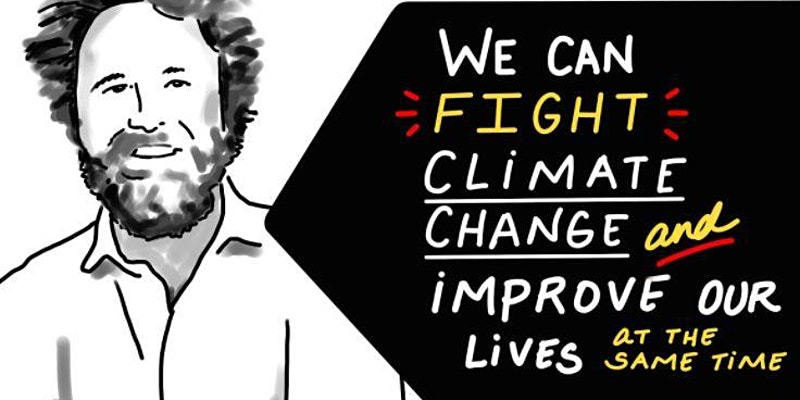 When: Wed, 23 March 2022; 6:30 PM – 8:00 PM
When: Wed, 23 March 2022; 6:30 PM – 8:00 PM Bushcare In Pittwater
Where we work Which day What time
Avalon
Angophora Reserve 3rd Sunday 8:30 - 11:30am
Avalon Dunes 1st Sunday 8:30 - 11:30am
Avalon Golf Course 2nd Wednesday 3 - 5:30pm
Careel Creek 4th Saturday 8:30 - 11:30am
Toongari Reserve 3rd Saturday 9 - 12noon (8 - 11am in summer)
Bangalley Headland 2nd Sunday 9 to 12noon
Bayview
Winnererremy Bay 4th Sunday 9 to 12noon
Bilgola
North Bilgola Beach 3rd Monday 9 - 12noon
Algona Reserve 1st Saturday 9 - 12noon
Plateau Park 1st Friday 8:30 - 11:30am
Church Point
Browns Bay Reserve 1st Tuesday 9 - 12noon
McCarrs Creek Reserve Contact Bushcare Officer To be confirmed
Clareville
Old Wharf Reserve 3rd Saturday 8 - 11am
Elanora
Kundibah Reserve 4th Sunday 8:30 - 11:30am
 Mona Vale
Mona Vale Mona Vale Beach Basin 1st Saturday 8 - 11am
Mona Vale Dunes 2nd Saturday +3rd Thursday 8:30 - 11:30am
Newport
Bungan Beach 4th Sunday 9 - 12noon
Crescent Reserve 3rd Sunday 9 - 12noon
North Newport Beach 4th Saturday 8:30 - 11:30am
Porter Reserve 2nd Saturday 8 - 11am
North Narrabeen
Irrawong Reserve 2nd Saturday 2 - 5pm
Palm Beach
North Palm Beach Dunes 3rd Saturday 9 - 12noon
Scotland Island
Catherine Park 2nd Sunday 10 - 12:30pm
Elizabeth Park 1st Saturday 9 - 12noon
Pathilda Reserve 3rd Saturday 9 - 12noon
Warriewood
Warriewood Wetlands 1st Sunday 8:30 - 11:30am
Whale Beach
Norma Park 1st Friday 9 - 12noon
Western Foreshores
Coopers Point, Elvina Bay 2nd Sunday 10 - 1pm
Rocky Point, Elvina Bay 1st Monday 9 - 12noon
Gardens And Environment Groups And Organisations In Pittwater
Sydney Wildlife Rescue: Helpers Needed
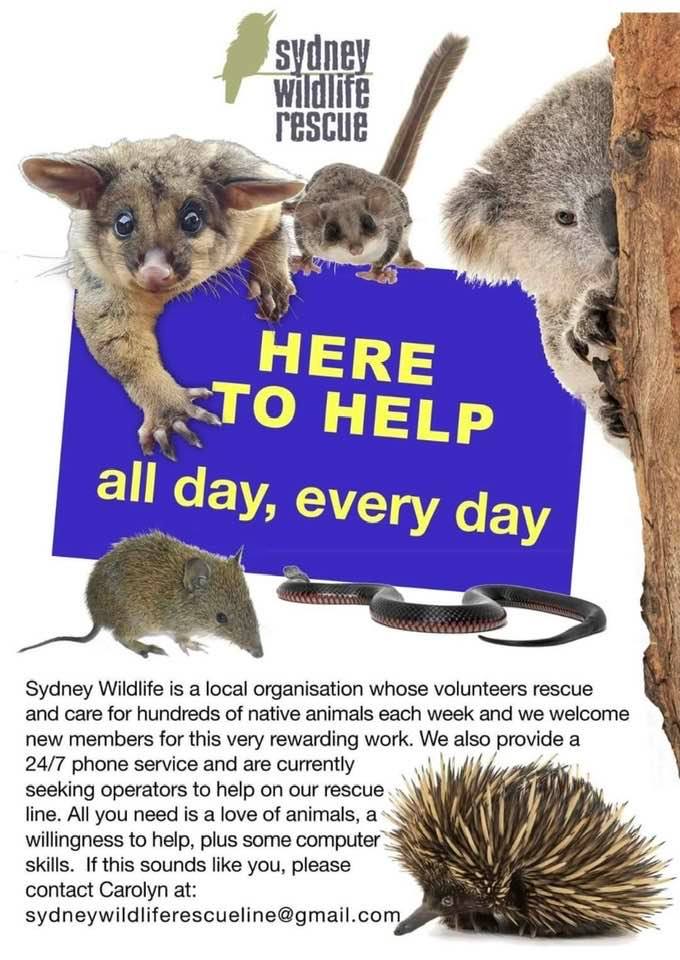
Under-resourced and undermined: as floods hit south-west Sydney, our research shows councils aren’t prepared
Nicky Morrison, Western Sydney University and Patrick Harris, UNSW SydneyThousands of people in south-western Sydney have been ordered to evacuate as extreme rain pummels the region and floodwaters rise rapidly. The downpour is expected to continue for days.
This region, particularly Western Sydney, is no stranger to climate-related disasters. Rain is falling on catchments already sodden from severe floods in March last year. Western Sydney is also vulnerable to extreme heat, and is 8-10℃ hotter than east Sydney during heatwaves.
Local councils are the level of government closest to communities and help determine how well regions withstand disasters like floods. But are councils prepared for the more frequent and intense disasters that climate change brings?
According to our new research on eight Western Sydney councils, the answer is no. We find it’s not easy to deliver action on the ground as these councils try to balance competing priorities in urban development, with limited resources and stretched budgets.
Balancing Responsibilities
When disasters such as floods strike, state and territory governments can declare a state of emergency and create evacuation orders.
But local councils are in a central position to increase community resilience and communicate directly with locals. This includes flood mapping, restricting certain developments near high-risk areas, and making evacuation routes known to residents.
Clearly distinguishing these responsibilities is crucial for Western Sydney, which is one of Australia’s fastest growing regionsand feels the destructive impacts of climate change intensely.
Western Sydney councils are currently dealing with back-to-back disasters in a continual crisis management cycle. At the same time, they’re tasked with pushing forward the NSW government’s housing and infrastructure development targets, which includes building almost 185,000 houses between 2016 and 2036.
Coupled with a lack of staff and funding, do they really have the capacity to cope with all this?
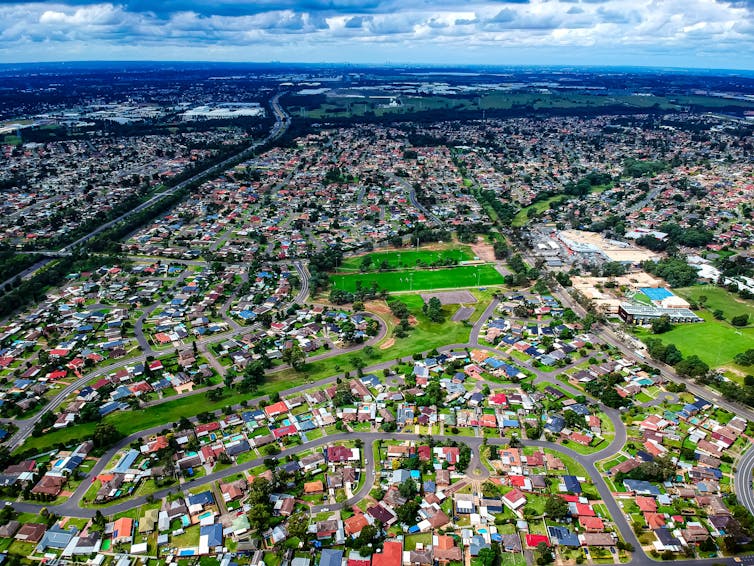
What We Found
We analysed 150 local government policies and planning documents, as well as local health district strategies. We also conducted 22 stakeholder interviews across the eight Western Sydney councils.
The good news is each council recognises the importance of addressing climate risk, and demonstrates a strong commitment to implementing sustainability, climate and resilience strategies. While action to mitigate climate change impacts on health and well-being is happening, the strategies are at very early stages.
According to our interviews, there’s a strong desire to do more, and all councils agree emergency preparedness and recovery work must take priority. While a NSW resilience program aims to address this, it doesn’t necessarily align with the unique risks each local community faces.
Acting quickly to move from planning to implementing strategies – such as redesigning buildings to match climate predictions – just isn’t in their capacity. And indeed, councils could not achieve this in time to mitigate the next climate crisis event.
Despite councils receiving money from the NSW government’s disaster assistance funding, they can struggle to pay for recovery from events like flooding. It can take weeks, months, or even years to get local communities back on their feet.
As the councils explained to us, this means already limited funds get pulled away from other work, such as long-term sustainability goals, or simply important day-to-day provisions.
Hawkesbury, Fairfield and Penrith city councils are especially challenged. They experienced the worst flooding in 50 years last March and now face even greater flood alert warnings at Hawkesbury-Nepean River.
State Government Undermines Local Decisions
Despite these difficulties, councils consistently told us that the biggest barrier to delivering sustainable, resilient, climate-ready development across Western Sydney was NSW state planning directives.
In the planning system, state policies override local plans and policies. This means local councils often struggle to implement their own strategies.
The result is that pressure from the state government to build more housing developments can undermine local councils’ policies to, for instance, preserve agricultural land and open spaces – measures that protect against flooding.
Indeed, this year’s floods have once again shown how problematic pro-growth agendas and “development for development’s sake” can be.
The recent report from the Intergovernmental Panel on Climate Change makes it clear flooding will increase in scale and frequency, and over-development (part of a problem termed “maladaptation”) will exacerbate the damage it inflicts.
So what needs to change? Our research presents a clear roadmap for local and state government agencies to better prepare.
This includes greater leadership and consistency from the state government, more collaboration between councils and in different levels of government, more capacity-building and more targeted funding.
What’s planned and built today must guarantee the safety, health and well-being of existing and new communities. Giving councils proper resources will help more of us survive in an uncertain future.![]()
Nicky Morrison, Professor of Planning, Western Sydney University and Patrick Harris, Senior Research Fellow, Deputy Director, CHETRE, UNSW Sydney
This article is republished from The Conversation under a Creative Commons license. Read the original article.
‘The sad reality is many don’t survive’: how floods affect wildlife, and how you can help them
Euan Ritchie, Deakin University and Chris J Jolly, Macquarie UniversityFor over two decades, bull sharks have called a Brisbane golf course home after, it’s believed, a flood washed them into the course’s lake in 1996. Now, after severe floods connected their landlocked home back to the river system, these sharks have gone missing, perhaps attempting to seek larger water bodies.
This bizarre tale is one of many accounts illustrating how Australia’s wildlife respond to flooding. But the sad reality is many don’t survive. Those that do may find their homes destroyed or, like those bull sharks and others, find themselves displaced far from their original homes or suitable habitat.
The RSPCA and other wildlife care organisations have received hundreds of calls to help rescue and care for stranded animals. But the true toll on wildlife will remain unknown, in part because we know surprisingly little about the impacts of floods on wildlife.
Still, as many animals have amazing abilities to survive fire, so too do many possess the means to survive or even profit from floods. After all, Australia’s wildlife has evolved over millions of years to survive in this land of extremes.
How Wildlife Responds To Floods
Floods rapidly turn land habitats into underwater habitats, allowing aquatic animals to venture into places you wouldn’t expect. Flooding during northern Australia’s annual wet season, for example, sees crocodiles occasionally turn up in people’s backyard pools.
Land-dwelling animals typically don’t fare as well in floods. Some may be able to detect imminent inundation and head for higher, drier ground. Others simply don’t have the ability or opportunity to take evasive action in time. This can include animals with dependent young in burrows, such as wombats, platypus and echidnas.
The extent to which flooding affects animals will depend on their ability to sense what’s coming and how they’re able to respond. Unlike humans who must learn to swim, most animals are born with the ability.
Echidnas, for example, have been known to cover large areas of open water, but fast flowing, powerful floods pose a very different proposition.
Animals that can fly – such as many insects, bats and birds – may be able to escape. But their success will also partly depend on the scale and severity of weather systems causing floods.
Many birds, for example, couldn’t get away from the heavy rain and seek shelter, ending up waterlogged. If birds are exhausted and can’t fly, they may suffer from exposure and also be more vulnerable to predators, such as feral cats and foxes.
During floods, age old predator-prey relationships, forged through evolution, can break down. Animals are more focused on self preservation, rather than their next meal. This can result in strange, ceasefire congregations.
For example, a venomous eastern brown snake was filmed being an unintentional life raft for frogs and mice. Likewise, many snakes, lizards and frogs are expert climbers, and will seek safety in trees – with or without company.
Some spiders have ingenious ways of finding safety, including spinning balloon-like webs to initiate wind-driven lift-off: destination dry land. This is what happened when Victoria’s Gippsland region flooded last year.
One of the challenges of extreme events is it can make food hard to find. Some animals – including microbats, pygmy possums, and many reptiles – may reduce their energy requirements by essentially going to “sleep” for extended periods, commonly referred to as torpor. This includes echidnas and Antechinus (insect-eating marsupials), in response to bushfire.
Might they do the same during floods? We really don’t know, and it largely depends on an animal’s physiology. In general, invertebrates, frogs, fish and reptiles are far better at dealing with reduced access to food than birds and mammals.
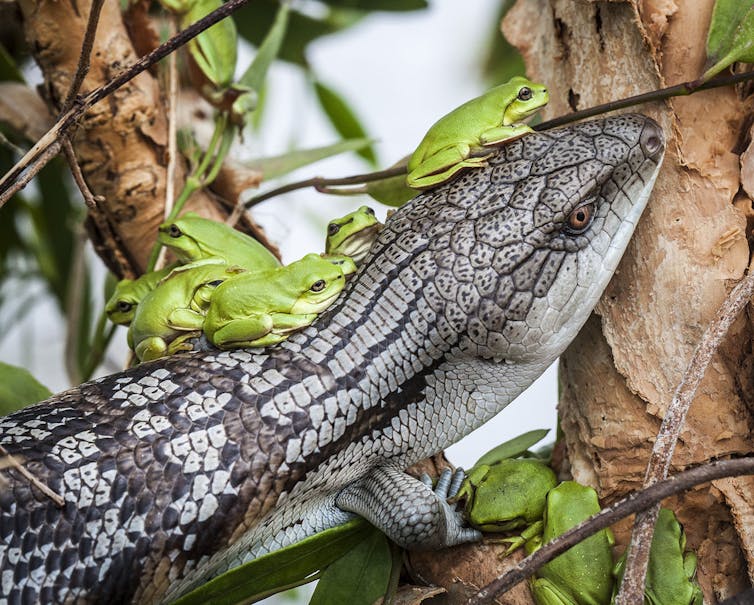
What Happens When Floods Recede?
Flooding may provide a bounty for some species. Some predators such as cats, foxes, and birds of prey, may have access to exhausted prey with fewer places to hide. These same predators may scavenge the windfall of dead animals.
Fish, waterbirds, turtles and other aquatic or semi-aquatic life may benefit from an influx of nutrients, increasing foraging opportunities and even stimulating breeding events.
Other wildlife may face harsher realities. Some may become trapped far from their homes. Those that attempt to return home will have to run the gauntlet of different habitats, roads, cats, dogs and foxes, and other threats.
Even if they make it home, will their habitats be the same or destroyed? Fast and large volumes of water can destroy vegetation and other habitat structures (soils, rock piles) in minutes, but they may take many years or decades to return, if ever.
Floodwaters can also carry extremely high levels of pollution, leading to further tragic events such as fish kills and the poisoning of animals throughout food chains.
How Can You Help?
Seeing wildlife in distress is confronting, and many of us may feel compelled to want to rescue animals in floodwaters. However, great caution is required.
Wading into floodwaters can put yourself at significant risk. Currents can be swift. Water can carry submerged and dangerous obstacles, as well as chemicals, sewage and pathogens. And distressed animals may panic when approached, putting them and yourself at further risk.
For example, adult male eastern grey kangaroos regularly exceed 70 kilograms with long, razor sharp claws and toe nails, and powerful arms and legs. They’ve been known to deftly use these tools to drown hostile farm dogs in dams and other water bodies.
So unless you’re a trained wildlife expert or animal carer, we don’t recommend you try to save animals yourself. There is more advice online, such as here and here.
If you’d like to support the care and recovery of wildlife following the floods, a number of organisations are taking donations, including WWF Australia, WIRES and the RSPCA.
What Does The Future Hold?
While many Australian wildlife species are well adapted to dealing with periodic natural disasters, including floods, we and wildlife will face even more intense events in the future under climate change. Cutting greenhouse gas emissions can lessen this impact.
For common, widespread species such as kangaroos, the loss of individuals to infrequent, albeit severe, events is tragic but overall doesn’t pose a great problem. But if floods, fires and other extreme events become more regular, we could see some populations or species at increased risk of local or even total extinction.
This highlights how Earth’s two existential crises – climate change and biodiversity loss – are inextricably linked. We must combat them swiftly and substantially, together, if we’re to avoid a bleak future.![]()
Euan Ritchie, Professor in Wildlife Ecology and Conservation, Centre for Integrative Ecology, School of Life & Environmental Sciences, Deakin University and Chris J Jolly, Postdoctoral Research Fellow, Macquarie University
This article is republished from The Conversation under a Creative Commons license. Read the original article.
The east coast rain seems endless. Where on Earth is all the water coming from?
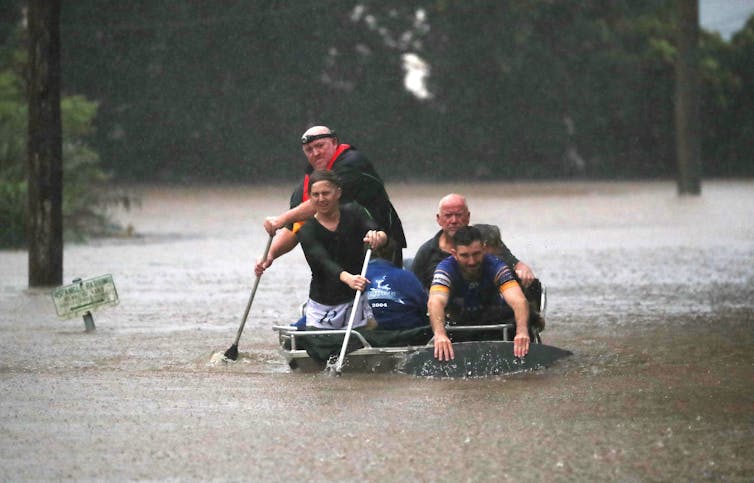
At any one time, Earth’s atmosphere holds only about a week’s worth of rain. But rainfall and floods have devastated Australia’s eastern regions for weeks and more heavy rain is forecast. So where’s all this water coming from?
We recently investigated the physical processes driving rainfall in eastern Australia. By following moisture from the oceans to the land, we worked out exactly how three oceans feed water to the atmosphere, conspiring to deliver deluges of rain similar to what we’re seeing now.
Such research is important. A better understanding of how water moves through the atmosphere is vital to more accurately forecast severe weather and help communities prepare.
The task takes on greater urgency under climate change, when heavy rainfall and other weather extremes are expected to become more frequent and violent.
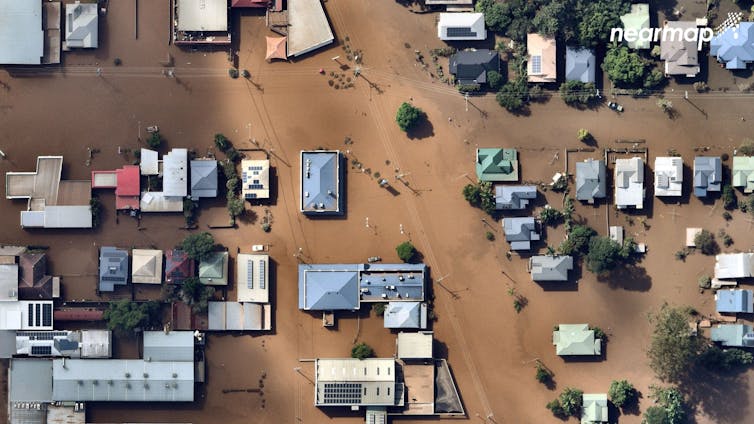
Big Actors Delivering Rain
The past few months in eastern Australia have been very wet, including the rainiest November on record.
Then in February, heavy rain fell on already saturated catchments. In fact, parts of Australia received more than triple the rain expected at this time of year.
So what’s going on?
In the theatre that is Australia’s rainfall, there are some big actors – the so-called climate oscillations. They’re officially known as:
El Niño-Southern Oscillation (ENSO): this cycle comprises El Niño and its opposite, La Niña. ENSO involves temperature changes across the tropical Pacific Ocean, affecting weather patterns around the world
Southern Annular Mode (SAM): the north-south movement of strong westerly winds over the Southern Ocean
Indian Ocean Dipole (IOD): changes in ocean temperatures and winds across the tropical Indian Ocean.
Like swings in a character’s mood, each climate mode has positive, negative and neutral phases. Each affect Australia’s weather in different ways.
ENSO’s negative phase, La Niña, brings wetter conditions to eastern Australia. The IOD’s negative phase, and SAM’s positive phase, can also bring more rain.

Going Back In Time
We studied what happens to the moisture supplying eastern Australian rainfall when these climate drivers are in their wet and dry phases.
We used a sophisticated model to trace moisture backwards in time: from where it fell as rain, back through the atmosphere to where it evaporated from.
We did this for every wet winter and spring day between 1979 and 2013.
This research was part of a broader study into where Australia’s rain comes from, and what changes moisture supply during both drought and heavy rain.
We found most rain that falls on eastern Australia comes from moisture evaporated from a nearby ocean. Typically, rain in eastern Australia comes from the Coral and Tasman seas. This is depicted in the strong blue colours in the figure below.

But interestingly, some water comes from as far as the Southern and Indian oceans, and some originates from nearby land areas, such as forests, bare soils, lakes and rivers.
Natural processes can alter the typical supply of moisture to the atmosphere, causing either droughts or floods.
Our research shows of all possible combinations of climate oscillations, a La Niña and a positive SAM phase occurring together has the biggest effect on eastern Australian rainfall. That combination is happening right now.
During La Niña, more moisture is transported from the ocean to the atmosphere over land and is more easily converted to rainfall when it arrives.
During the positive SAM, the usual westerly winds shift southward, allowing moisture-laden winds from the east to flow into eastern Australia.
Our research focused on winter and spring. However, we expect the current rainfall is the result of the same combined effect of the two climate oscillations.
The Indian Ocean Dipole is not active at this time of the year. But it was in a weak negative phase last spring, which tends to bring wetter-than-normal conditions.
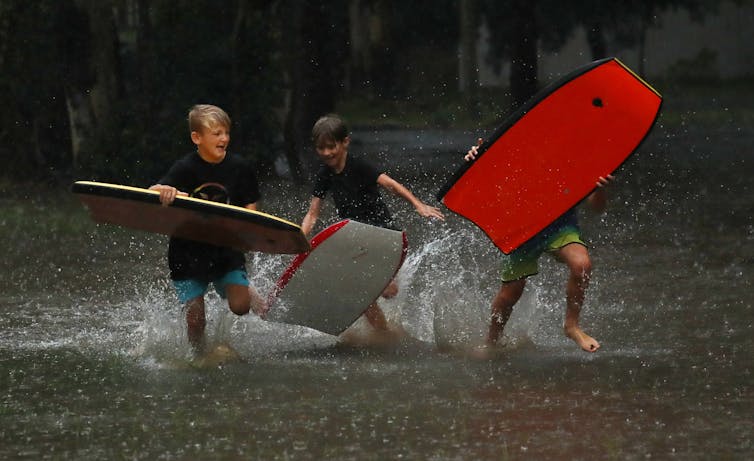
Looking To Future Floods
Under climate change, extreme La Niña and El Niño events, and weather systems like those causing the current floods, are expected to worsen. So reducing greenhouse gas emissions is crucial.
The current La Niña event is past its peak and is predicted to dissipate in autumn. But because our catchments are so full of water, we still need to be on alert for extreme weather.
The current devastating floods are a sobering lesson for the future. They show the urgent need to understand and predict extreme events, so communities can get ready for them.![]()
Chiara Holgate, Hydroclimatologist, Australian National University; Agus Santoso, Senior Research Associate, UNSW Sydney, and Alex Sen Gupta, Senior Lecturer, School of Biological, Earth and Environmental Sciences, UNSW Sydney
This article is republished from The Conversation under a Creative Commons license. Read the original article.
NSW is being hit by a one-two of east coast lows. But aren’t those a winter thing?
Milton Speer, University of Technology Sydney and Lance M Leslie, University of Technology SydneyIt was Western Sydney’s turn for a drenching this week, as the region was hit by an east coast low – the infamous storm systems that periodically bring heavy rainfall to the New South Wales coast.
This east coast low was created by the same persistent band of low atmospheric pressure that generated a series of thunderstorms that soaked Brisbane and Lismore during the preceding days, delivering daily rainfall totals greater than 250 millimetres to Southeast Queensland and the NSW Northern Rivers.
The east coast low then formed on Tuesday, dumping more than 100mm of rain on western Sydney and the nearby ranges.
And this low pressure trough isn’t done yet. It’s forecast to create a second east coast low that will develop over the weekend and affect the NSW south coast, bringing rain that could once again extend to the greater Sydney area and also to to the Hunter region.
The remarkable persistence and geographical spread of these rain systems prompts several questions. Why did the first east coast low form, even after so much rain had already fallen on Brisbane and Lismore? Why is a second east coast low poised to form further to the south? And why are these systems, more commonly thought of as a winter phenomenon, happening at the tail end of summer?
How And When Do East Coast Lows Form?
East coast lows typically form one at a time. But it’s not that unusual for a particularly large area of low atmospheric pressure to spawn several of these storm systems, either one after another, or sometimes even simultaneously.
As we’ve already described, the precursor to the formation of an east coast low is typically a low pressure trough, similar to the one that has been positioned near Brisbane and northern NSW for more than a week.
A low pressure trough is an elongated region of low atmospheric pressure, and on Australia’s east they typically run alongside the coast. They are often an indicator of coming clouds, showers or, given enough atmospheric moisture, very heavy showers or thunderstorms.
Combined with the high moisture content in the atmosphere over coastal eastern Australia, due partly to the influence of La Niña this summer, the resulting flood rainfall was focused close to the trough. The fact that the trough has remained almost stationary for an extended period of time has meant continuous rainfall for Southeast Queensland and the NSW Northern Rivers.
Eventually, the low pressure trough moved east on Tuesday and a weak low pressure centre developed well to the east of Brisbane, over the Tasman Sea. As the low pressure centre developed and moved slowly towards the NSW coast on Wednesday, the moist, southeast winds on the southern side of the low concentrated the rain onto the eastern side of the Great Dividing Range, north of Sydney.
The low pressure centre finally weakened on Thursday. But a second east coast low is forecast to form during Sunday near the southern half of the New South Wales coast, resulting in more coastal rain spreading as far north as the Hunter region.

Do They Eventually Move On?
These low pressure systems tend to dissipate in a matter of a day or two, unless other nearby atmospheric conditions prolong their survival. At this time of year, they need to be reinforced by cold fronts moving from west to east, immediately to Australia’s south.
Such frontal systems have been absent in recent months, enabling the very moist air to remain in place over most of eastern Australia.
A contrasting sequence of the persistent easterly airflow has been its impact on southwestern Australia. The easterly winds have shed their moisture during their passage over southern Australia. Hence, they reach southwestern Australia as a hot, dry air mass. It’s no coincidence that Perth has just smashed its record for the number of days above 40℃ in a summer.
Is This Normal For This Time Of Year?
East coast lows can form in any month of the year, although they tend to happen mostly in the cooler months of April to September. Some devastating east coast lows have formed during warmer months, including the one that hit the Sydney to Hobart Race in December 1998, claiming six lives and sinking five yachts.
It is hard to assess whether climate change has had an influence on the frequency of warm-season east coast lows. However, rising average sea surface temperatures could conceivably be a contributing factor to any change in their frequency.
For the more common cool-season east coast lows, however, we already know their development has shifted further south and east since the 1990s. This is consistent with the predictions of climate models that global warming will push mid-latitude westerly winds further towards the poles.
As this process continues, those east coast lows that develop in a westerly wind regime are likely to shift further poleward or become less frequent if conditions become less conducive to their formation, as suggested by recent research.
But these ferocious weather systems will nevertheless continue to be a threat to Australia’s east coast. Even if the rain doesn’t make landfall, east coast lows can generate large waves that disrupt otherwise benign sea conditions, such as in January 2021, when three people were tragically killed at Port Kembla.![]()
Milton Speer, Visiting Fellow, School of Mathematical and Physical Sciences, University of Technology Sydney and Lance M Leslie, Professor, School of Mathematical And Physical Sciences, University of Technology Sydney
This article is republished from The Conversation under a Creative Commons license. Read the original article.
The floods have killed at least 21 Australians. Adapting to a harsher climate is now a life-or-death matter
Barbara Norman, University of CanberraThe devastating floods in Queensland and New South Wales highlight, yet again, Australia’s failure to plan for natural disasters. As we’re seeing now in heartbreaking detail, everyday Australians bear the enormous cost of this inaction.
It’s too soon to say whether the current floods are directly linked to climate change. But we know such disasters are becoming more frequent and severe as the climate heats up.
In 2019, Australia ranked last out of 54 nations on its strategy to cope with climate change.
Australia had a chance to lift its game when it released a new climate resilience and adaptation strategy late last year. But the plan was weak and contained no funding or detailed action.
At the time of writing, the current floods had killed at least 21 people across two states and left many thousands homeless. Sydney suburbs were being evacuated amid warnings of more intense rain.
Governments must urgently invest in measures to help communities cope with extreme weather events. As we’re seeing right now, Australian lives depend on it.

Right Here, Right Now
Last week’s report by the Intergovernmental Panel on Climate Change was just one in a long line of warnings about the increasing risk of natural disasters as global warming worsens.
Australian governments are well aware of the problem. In fact, the federal government’s new National Climate Resilience and Adaptation Strategy, launched at the Glasgow climate conference in November last year, stated:
As the global temperature rises and other changes to the climate increase, Australia will face more frequent and severe events, such as extreme weather, fires and floods, and slow-onset events, such as changing rainfall patterns, ocean acidification and sea level rise.
The measures it contained were a start – but communities across Australia need much more, right now.
The strategy contained no new budget commitments or specific programs. It also lacked detailed actions on how to help urban and regional communities prepare for the impacts of climate change.
I have extensive experience in the public sector at all levels of government, in areas such as coastal, urban and regional planning, and climate change adaptation.
I also have first-hand experience of natural disasters. In the 2019-20 Black Summer bushfires my family lost a much-loved holiday home at Mallacoota in Victoria, which we’d held for four generations. I’ve also worked on the ground helping councils and communities prepare for and recover from disasters.

I’m deeply concerned at how badly prepared Australia is for current and future damage from climate change. Australia lacks even the most basic policies and plans, including:
no national coastal plan for coastal erosion and inundation
no national urban policy for climate-resilient development
no national requirement for climate change to be considered in urban and regional land-use plans
no funded national support program for urban and regional communities to adapt to current and future climate risk.
Australia was once a leader in climate adaptation. But this momentum has been lost over the past decade, as the climate wars played out in federal parliament.
And last week, it emerged the federal government has spent just a fraction of the A$4.8 billion emergency fund despite the worsening flood crisis.
This does little to reassure the public that our leaders are focused on helping communities recover from and adapt to natural disasters.
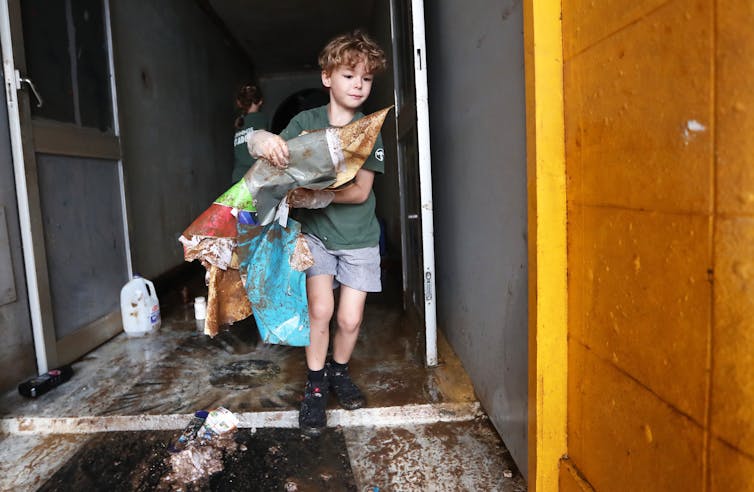
The Plan Australians Deserve
So what must Australia do to get ready for the harsher future that awaits? Over many years, experts from a range of organisations and disciplines have put their minds to this question. These are some measures they’ve called for:
1. An integrated national climate action plan
This would involve funding and programs for state governments, local councils and industry, enabling them to work with communities to prepare for climate change.
2. A national coastal strategy
Coastal communities are especially vulnerable to storms, floods and bushfires which will worsen under climate change. Leading experts last year outlined the need for a climate change plan tailored to these communities. It would include a national agency to coordinate ocean and coastal governance across tiers of government.
3. Review urban planning legislation and city plans
Planning experts and others have called for climate change considered when making everyday decisions about the built environment. This would lead to more sustainable, pleasant and healthy urban and regional communities, as well as minimising disaster risks.
These decisions include where to locate new housing developments, as well as investing in green buildings and water-sensitive urban design.
And we also need to start conversations with communities at risk, such as those on floodplains or in bushfire-prone areas, to prepare city and town plans that incorporate future risks.
4. Stronger links between organisations
Greater cooperation is needed between emergency management, climate scientists and land-use planners, so they can effectively work together to prepare climate-resilient community plans. Better communication is also needed to ensure knowledge is shared and best-practice is maintained.
5. More money for research and community plans
Governments must fund the development of cutting-edge applied research to better understand and map climate risks. In addition, funding is needed for climate-resilient urban development and to support vulnerable communities through long-term adaptation plans.
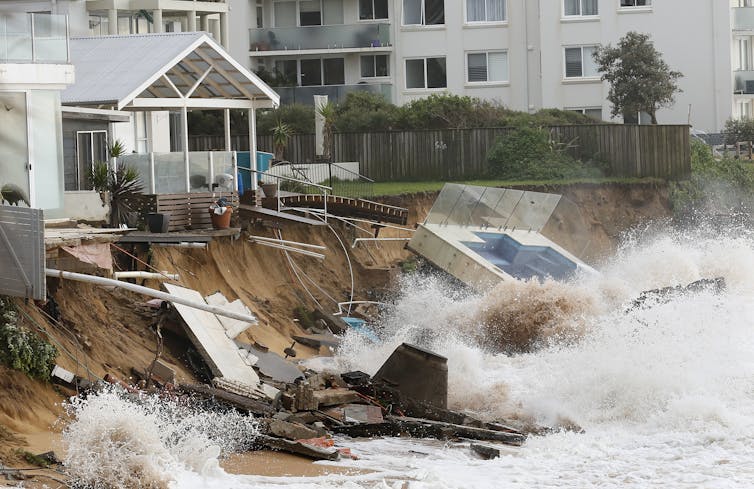
Facing Hard Facts
In just a few years, many Australian communities have weathered a series of natural disasters overlaid by the COVID pandemic. They are exhausted, and deserve better.
Crucially, governments must be prepared to lead on emissions reduction to minimise, as much as we can, damage to Earth’s climate.
But we must also face the reality that natural disasters in Australia will get worse. Communities need practical, funded help now to ensure they survive and thrive as the climate warms. ![]()
Barbara Norman, Professor of Urban & Regional Planning; Chair of the Climate Change Adaptation and Resilience Research Network (CCARRN), University of Canberra
This article is republished from The Conversation under a Creative Commons license. Read the original article.
Extinction crisis: native mammals are disappearing in Northern Australia, but few people are watching
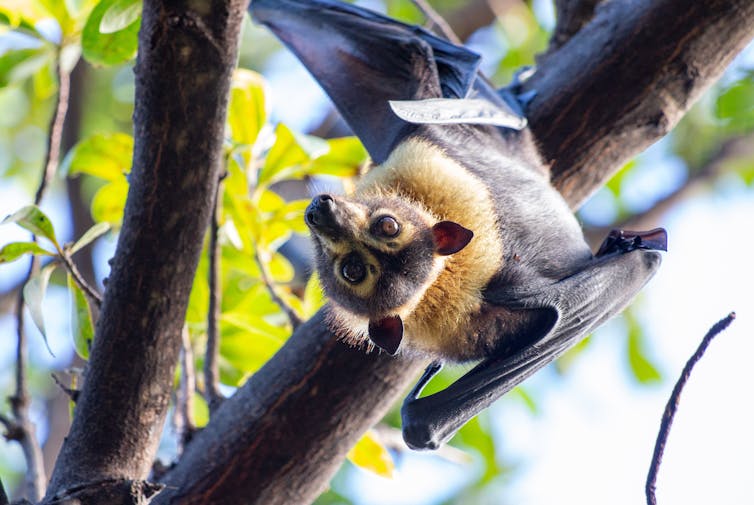
At the time Australia was colonised by Europeans, an estimated 180 mammal species lived in the continent’s northern savannas. The landscape teemed with animals, from microbats to rock-wallabies and northern quolls. Many of these mammals were found nowhere else on Earth.
An unidentified account from the Normanton district of Northwest Queensland, dating back to 1897, told of the abundance:
“There were thousands of millions of those rats (Rattus villosissimus), and as most Gulf identities may remember, after them came a plague of native cats (the Northern Quoll).
These extended from 18 miles west of the Flinders (River) to within 40 miles of Normanton, and they cleaned up all our tucker.”
But tragically, in the years since, many of these mammals have disappeared. Four species have become extinct and nine face the same fate in the next two decades.
And we know relatively little about this homegrown crisis. Monitoring of these species has been lacking for many decades – and as mammal numbers have declined, the knowledge gaps have become worse.
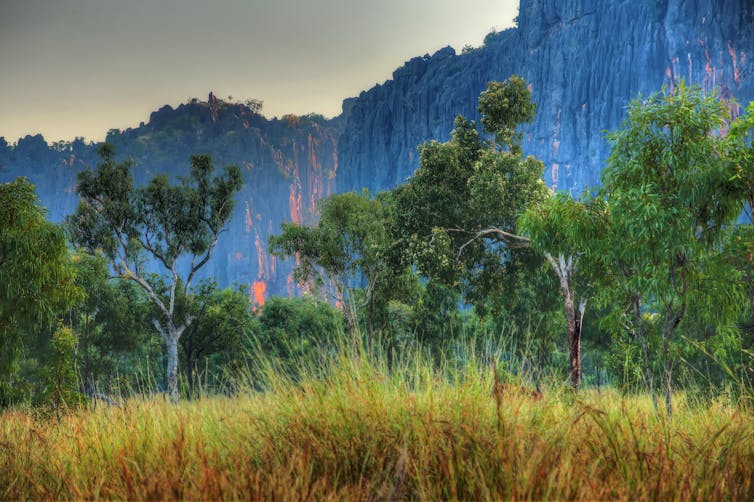
A Precipitous Decline
Northern Australia savanna comprises the top half of Queensland and the Northern Territory and the top quarter of Western Australia. It covers 1.9 million square kilometres, or 26% of the Australian landmass.
Species already extinct in Northern Australia are:
- burrowing bettong
- Victoria River district nabarlek (possibly extinct)
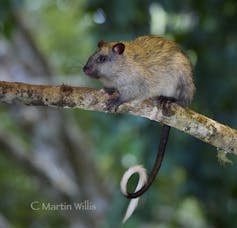
- Capricornian rabbit-rat
- Bramble Cay melomys.
The Northern Australia species identified at risk of becoming extinct within 20 years are:
- northern hopping-mouse
- Carpentarian rock-rat
- black-footed tree rat (Kimberley and Top End)
- Top End nabarlek
- Kimberley brush-tailed phascogale
- brush-tailed rabbit-rat (Kimberley and Top End)
- northern brush-tailed phascogale
- Tiwi Islands brush-tail rabbit-rat
- northern bettong.
Many other mammal species have been added to the endangered list in recent years, including koalas, the northern spotted-tailed quoll and spectacled flying foxes.
So what’s driving the decline? For some animals, we don’t know the exact reasons. But for others they include global warming, pest species, changed fire regimes, grazing by introduced herbivores and diseases.
Monitoring Is Crucial
There’s no doubt some mammal species in Northern Australia are heading towards extinction. But information is limited because monitoring of these populations and their ecosystems is severely lacking.
Monitoring is crucial to species conservation. It enables scientists to protect an animal’s habitat, and understand the rate of decline and what processes are driving it.
Our research found most of Northern Australia lacks monitoring of species or ecosystems.
Monitoring mostly comprises long-term projects in three national parks in the Northern Territory. The trends for mammals across the region must be estimated from these few sites.
More recent monitoring sites have been established in Western Australia’s Kimberley. Very few fauna monitoring programs exist in Queensland savannas.
The lack of monitoring hampers conservation efforts. For example, researchers don’t know the status of the Queensland subspecies of black‐footed tree‐rat because the species is not monitored at all.
Research and monitoring efforts have declined significantly over the past couple of decades. Reasons for this include, but are not limited to:
a massive reduction in federal environment funding since 2013 and substantial reductions in some state and territory environment funding
reduced capacity of government-unded institutions devoted to ecosystem and species research
the existence of only two universities in northern Australia with an ecological research focus
a reliance on remote sensing and vegetation condition monitoring, which does not detect animal trends.
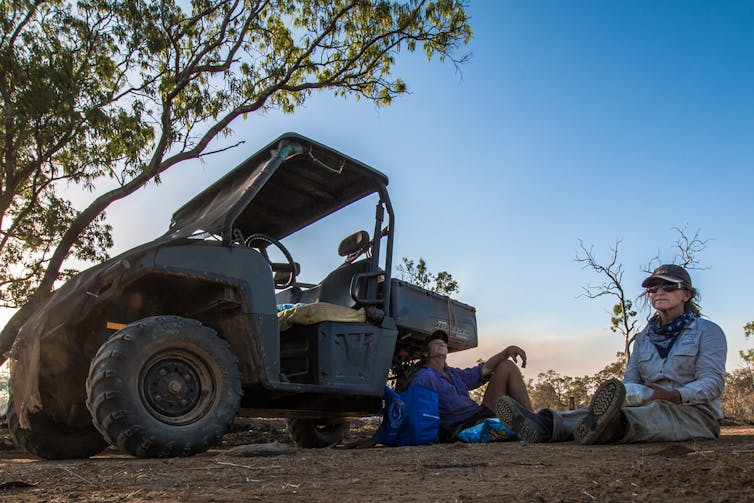
The Lesson Of The Bramble Cay Melomys
An avalanche of research shows increasing rates of decline in animal populations and extinctions. Australia has the worst mammal extinction rate of any country.
Yet governments in Australia have largely sat on their heels as the biodiversity crisis worsens.
A Senate committee was in 2018 charged with investigating Australia’s faunal extinctions. It has not yet produced its final report.
In September last year, the federal environment department announced 100 “priority species” would be selected to help focus recovery actions. But more than 1,800 species are listed as threatened in Australia. Prioritising just 100 is unlikely to help the rest.
The lack of threatened species monitoring in Australia creates a policy blindfold that prevents actions vital to preventing extinctions.
Nowhere is this more true than in the case of the Bramble Cay Melomys. The nocturnal rodent was confirmed extinct in 2016 due to flooding of its island home in the Torres Strait, caused by global warming.
The species had previously been acknowledged as one of the rarest mammals on Earth – yet a plan to recover its numbers was never properly implemented.
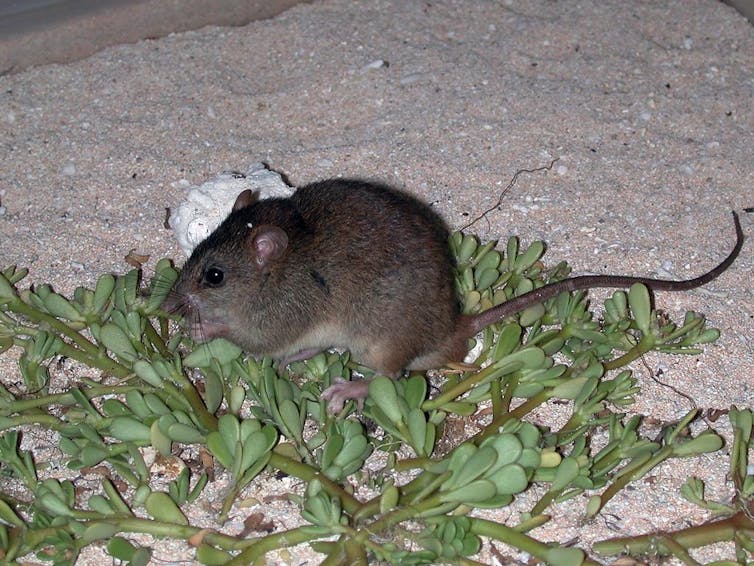
A Crisis On Our Watch
Conservation scientists and recovery teams are working across Northern Australia to help species and ecosystems recover. But they need resources, policies and long-term commitment from governments.
Indigenous custodians who work on the land can provide significant skills and resources to save species. If Traditional Owners could combine forces with non‐Indigenous researchers and conservation managers – and with adequate support and incentives – we could make substantial ground.
Indigenous Protected Areas, national parks and private conservation areas provide some protection, but this network needs expansion.
We propose establishing a network of monitoring sites by prioritising particular bioregions – large, geographically distinct areas of land with common characteristics.
Building a network of monitoring sites would not just help prevent extinctions, it would also support livelihoods in remote Northern Australia.
Policies determining research and monitoring investment need to be reset, and new approaches implemented urgently. Crucially, funding must be adequate for the task.
Without these measures, more species will become extinct on our watch.![]()
Noel D Preece, Adjunct Asssociate Professor, James Cook University and James Fitzsimons, Adjunct Professor in Environmental Sciences, Deakin University
This article is republished from The Conversation under a Creative Commons license. Read the original article.
Kelp won’t help: why seaweed may not be a silver bullet for carbon storage after all
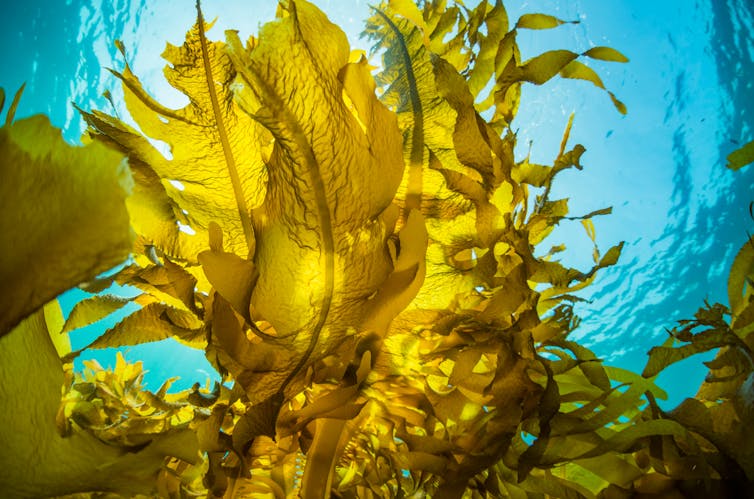
Over the last few years, there’s been a lot of hope placed in seaweed as a way to tackle climate change.
The excitement stemmed from studies suggesting seaweed could be scaled up to capture and store huge quantities of carbon dioxide, taking advantage of rapid growth rates, large areas, and long-term storage in the deep ocean.
At present it’s thought seaweed stores around 175 million tonnes annually of carbon, or 10% of the emissions from all the cars in the world. To many scientists, this suggested the possibility seaweed could join other blue carbon storage in mangroves and wetlands as a vital tool in the fight to stop climate change.
While we’re all ready for some good news on climate, there is nearly always a “but” in science. Our new research has identified a major overlooked issue. Is it significant? Unfortunately, yes. When we accounted for this, our calculations suggest on average seaweed ecosystems may not be a carbon sink after all, but a natural source of carbon.
How Can This Be?
There were good reasons to look to coastal seaweed as an important global carbon sink. Some species can grow as much as 60 centimetres per day. Seaweed covers around 3.4 million square kilometres of our oceans. And when wind and waves break off fronds and pieces of seaweed, some will escape being eaten and instead be whisked out to the deep ocean and deposited.
Once the seaweed is in deep waters or buried in sediments, the carbon it contains is safely locked away for several hundred years. That is to say, the time it takes ocean circulation to drive bottom waters towards the surface.
So what’s the issue?
As the surrounding coastal waters wash through the seaweed canopy, they bring in vast quantities of plankton and other organic material from further out at sea. This provides extra food for filter feeders like sea squirts, shellfish living amongst seaweed, and the bryozoan animals which end up coating many seaweed fronds.
As these creatures consume this extra food supply, they breathe out carbon dioxide additional to that produced by eating seaweed. Individually, the amount is tiny. But on an ecosystem scale, their numbers and ability to filter large amounts of water are enough to skew what researchers call the net ecosystem production – the balance between carbon dioxide inflows and outflows. And not just by a little, but potentially by a lot.
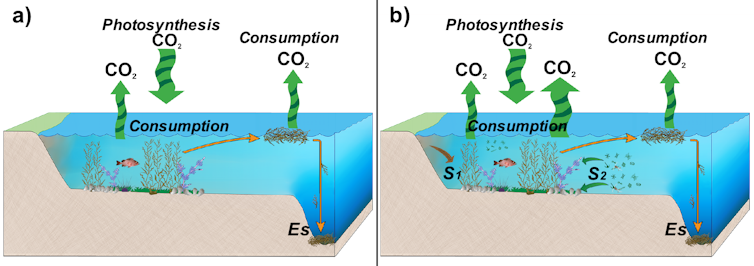
How did we figure this out? We collated global studies which directly measured or reported the key parts of net ecosystem production, ranging from polar regions to tropical.
Seaweed ecosystems, we found, were natural carbon sources, releasing on average around 20 tonnes per square kilometre every year.
But it could be much higher still. When we included estimates of how much carbon returned to the atmosphere from seaweed washed out towards the deep sea only to decompose or be eaten first, we found seaweed could be a much larger natural source.
We estimate it could be potentially as high as 150 tonnes emitted to the atmosphere per km² every year, in contrast to previous estimates that seaweed absorbs 50 tonnes per km². We must stress this figure has some uncertainty around it, given the difficulty of estimating the quantities involved.
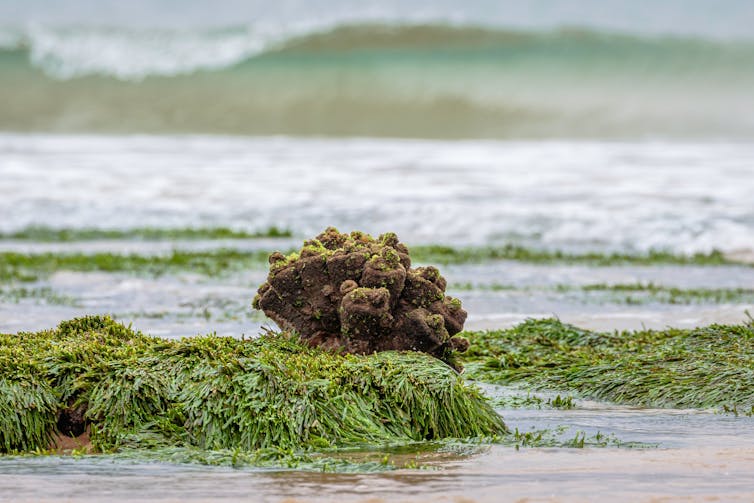
Do We Give Up On Seaweed Carbon Storage?
In short, no. If we lose seaweed, what would replace it? It could be urchin barrens – large rocky outcrops dominated by sea urchins – or smaller seaweed species, or mussel beds. Climate change is already showing us in some places, with giant kelp dying en masse due to marine heatwaves and background warming in Tasmania and being replaced by urchin barrens.
To make a true accounting of what seaweed offers in carbon storage, we need to factor in what any replacement ecosystem would offer.
If a replacement ecosystem is an even greater carbon source or smaller carbon sink than the original seaweed ecosystem, it follows we should maintain or restore existing seaweed ecosystems to reduce further greenhouse gas emissions. However, to date, we have not found sufficient data to test whether all replacement ecosystems are in fact greater or lesser carbon sources.
What does this mean for efforts to tackle climate change? It means we should not look to seaweed as a silver bullet.
Any efforts to quantify seaweed carbon storage and mitigation for the protection, restoration or farming of seaweed must make a full accounting of carbon inputs and output to ensure we are not unwittingly making the problem worse rather than better.
As some carbon trading schemes look to include seaweed, we must not overestimate how good seaweed is at storing carbon.
If we get this wrong, we could see perverse outcomes where industries offset their emissions by funding the preservation or restoration of seaweeds – but in doing so, actually increase their emissions rather than zero them out.![]()
John Barry Gallagher, Associate Researcher, University of Tasmania
This article is republished from The Conversation under a Creative Commons license. Read the original article.
Stunning New-To-Science Fairy Wrasse Is First-Ever Fish Described By A Maldivian Scientist
March 8, 2022
Though there are hundreds of species of fish found off the coast of the Maldives, a mesmerizing new addition is the first-ever to be formally described -- the scientific process an organism goes through to be recognized as a new species -- by a Maldivian researcher. The new-to-science Rose-Veiled Fairy Wrasse (Cirrhilabrus finifenmaa), described today in the journal ZooKeys, is also one of the first species to have its name derived from the local Dhivehi language, 'finifenmaa' meaning 'rose', a nod to both its pink hues and the island nation's national flower.
Scientists from the California Academy of Sciences, the University of Sydney, the Maldives Marine Research Institute (MMRI), and the Field Museum collaborated on the discovery as part of the Academy's Hope for Reefs initiative aimed at better understanding and protecting coral reefs around the world.
"It has always been foreign scientists who have described species found in the Maldives without much involvement from local scientists, even those that are endemic to the Maldives," says study co-author and Maldives Marine Research Institute biologist Ahmed Najeeb. "This time it is different and getting to be part of something for the first time has been really exciting, especially having the opportunity to work alongside top ichthyologists on such an elegant and beautiful species."
First collected by researchers in the 1990s, C. finifenmaa was originally thought to be the adult version of a different species, Cirrhilabrus rubrisquamis, which had been described based on a single juvenile specimen from the Chagos Archipelago, an island chain 1,000 kilometers (621 miles) south of the Maldives.
In this new study, however, the researchers took a more detailed look at both adults and juveniles of the multi-coloured marvel, measuring and counting various features, such as the color of adult males, the height of each spine supporting the fin on the fish's back and the number of scales found on various body regions. These data, along with genetic analyses, were then compared to the C. rubrisquamis specimen to confirm that C. finifenmaa is indeed a unique species.
Importantly, this revelation greatly reduces the known range of each wrasse, a crucial consideration when setting conservation priorities.
"What we previously thought was one widespread species of fish, is actually two different species, each with a potentially much more restricted distribution," says lead author and University of Sydney doctoral student Yi-Kai Tea. "This exemplifies why describing new species, and taxonomy in general, is important for conservation and biodiversity management."
Despite only just being described, the researchers say that the Rose-Veiled Fairy Wrasse is already being exploited through the aquarium hobbyist trade.
"Though the species is quite abundant and therefore not currently at a high risk of overexploitation, it's still unsettling when a fish is already being commercialized before it even has a scientific name," says senior author and Academy Curator of Ichthyology Luiz Rocha, PhD, who co-directs the Hope for Reefs initiative. "It speaks to how much biodiversity there is still left to be described from coral reef ecosystems."
Last month, Hope for Reefs researchers continued their collaboration with the MMRI by conducting the first surveys of the Maldives' 'twilight zone' reefs -- the virtually unexplored coral ecosystems found between 50- to 150-meters (160- to 500-feet) beneath the ocean's surface -- where they found new records of C. finifenmaa along with at least eight potentially new-to-science species yet to be described.
For the researchers, this kind of international partnership is pivotal to best understand and ensure a regenerative future for the Maldives' coral reefs.
"Nobody knows these waters better than the Maldivian people," Rocha says. "Our research is stronger when it's done in collaboration with local researchers and divers. I'm excited to continue our relationship with MMRI and the Ministry of Fisheries to learn about and protect the island nation's reefs together."
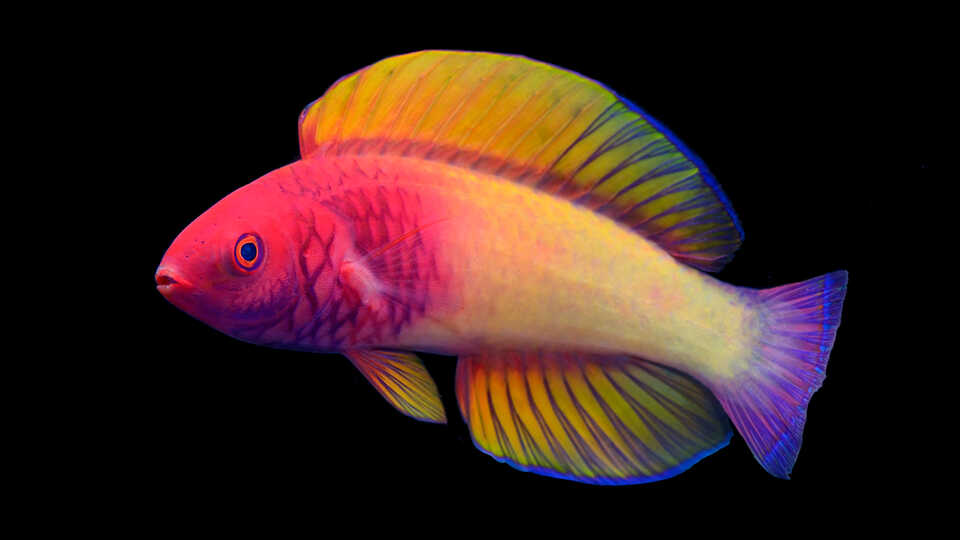
A vibrantly colored Rose-Veiled Fairy Wrasse. This new-to-science Rose-Veiled Fairy Wrasse is the first Maldivian fish to ever be described by a local researcher. (© Yi-Kai Tea)
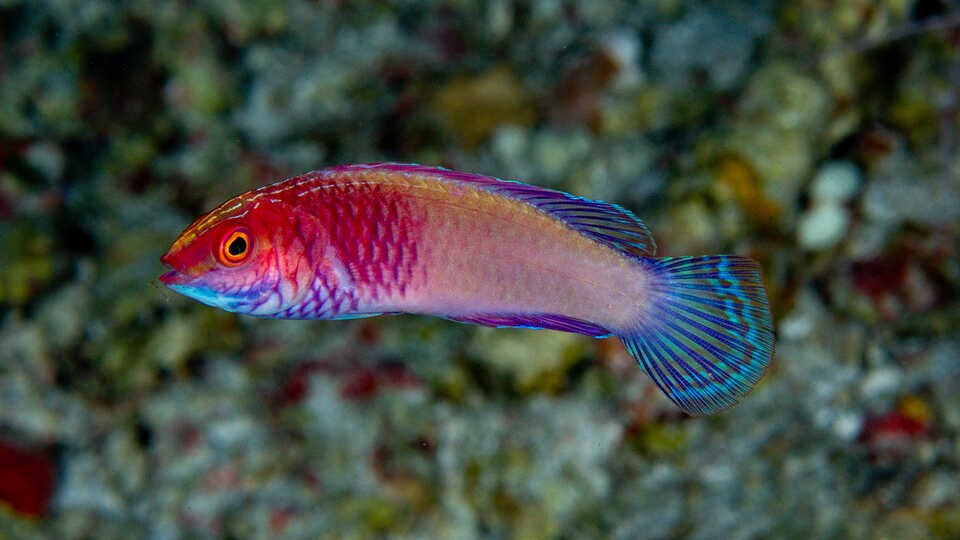
A Rose-Veiled Fairy Wrasse photographed off the coast of the Maldives. A Rose-Veiled Fairy Wrasse photographed off the coast of the Maldives during a recent Hope for Reefs research expedition. (Luiz Rocha © California Academy of Sciences)
"Collaborating with organizations such as the Academy helps us build our local capacity to expand knowledge in this field. This is just the start and we are already working together on future projects," Najeeb says. "Our partnership will help us better understand the unexplored depths of our marine ecosystems and their inhabitants. The more we understand and the more compelling scientific evidence we can gather, the better we can protect them."
Yi-Kai Tea, Ahmed Najeeb, Joseph Rowlett, Luiz A. Rocha. Cirrhilabrus finifenmaa (Teleostei, Labridae), a new species of fairy wrasse from the Maldives, with comments on the taxonomic identity of C. rubrisquamis and C. wakanda. ZooKeys, 2022; 1088: 65 DOI: 10.3897/zookeys.1088.78139
Avalon Golf Course Bushcare Needs You


Pittwater Reserves: Histories + Notes + Others
A History Of The Campaign For Preservation Of The Warriewood Escarpment by David Palmer OAM and Angus Gordon OAM
Angophora Reserve - Angophora Reserve Flowers
Annie Wyatt Reserve - A Pictorial
Avalon's Village Green: Avalon Park Becomes Dunbar Park - Some History + Toongari Reserve and Catalpa Reserve
Bairne Walking Track Ku-Ring-Gai Chase NP by Kevin Murray
Bangalley Headland Bangalley Mid Winter
Banksias of Pittwater
Barrenjoey Boathouse In Governor Phillip Park Part Of Our Community For 75 Years: Photos From The Collection Of Russell Walton, Son Of Victor Walton
Barrenjoey Headland: Spring flowers
Barrenjoey Headland after fire
Bayview Baths
Bayview Wetlands
Beeby Park
Bilgola Beach
Botham's Beach
Bungan Beach Bush Care
Careel Bay Saltmarsh plants
Careel Bay Birds
Careel Bay Clean Up day
Careel Bay Playing Fields History and Current
Careel Creek
Careel Creek - If you rebuild it they will come
Centre trail in Ku-ring-gai Chase National Park
Chiltern Track- Ingleside by Marita Macrae
Clareville Beach
Clareville/Long Beach Reserve + some History
Coastal Stability Series: Cabbage Tree Bay To Barrenjoey To Observation Point by John Illingsworth, Pittwater Pathways, and Dr. Peter Mitchell OAM
Cowan Track by Kevin Murray
Curl Curl To Freshwater Walk: October 2021 by Kevin Murray and Joe Mills
Currawong and Palm Beach Views - Winter 2018
Currawong-Mackerel-The Basin A Stroll In Early November 2021 - photos by Selena Griffith
Currawong State Park Currawong Beach + Currawong Creek
Deep Creek To Warriewood Walk photos by Joe Mills
Drone Gives A New View On Coastal Stability; Bungan: Bungan Headland To Newport Beach + Bilgola: North Newport Beach To Avalon + Bangalley: Avalon Headland To Palm Beach
Dunbar Park - Some History + Toongari Reserve and Catalpa Reserve
Dundundra Falls Reserve: August 2020 photos by Selena Griffith - Listed in 1935
Elsie Track, Scotland Island
Elvina Track in Late Winter 2019 by Penny Gleen
Elvina Bay Walking Track: Spring 2020 photos by Joe Mills
Elvina Bay-Lovett Bay Loop Spring 2020 by Kevin Murray and Joe Mills
Fern Creek - Ingleside Escarpment To Warriewood Walk + Some History photos by Joe Mills
Iluka Park, Woorak Park, Pittwater Park, Sand Point Reserve, Snapperman Beach Reserve - Palm Beach: Some History
Ingleside
Ingleside Wildflowers August 2013
Irrawong - Ingleside Escarpment Trail Walk Spring 2020 photos by Joe Mills
Irrawong - Mullet Creek Restoration
Katandra Bushland Sanctuary - Ingleside
Lucinda Park, Palm Beach: Some History + 2022 Pictures
McCarrs Creek
McCarr's Creek to Church Point to Bayview Waterfront Path
McKay Reserve
Mona Vale Beach - A Stroll Along, Spring 2021 by Kevin Murray
Mona Vale Headland, Basin and Beach Restoration
Mount Murray Anderson Walking Track by Kevin Murray and Joe Mills
Mullet Creek
Narrabeen Creek
Narrabeen Lagoon Catchment: Past Notes Present Photos by Margaret Woods
Narrabeen Lagoon State Park
Narrabeen Lagoon State Park Expansion
Narrabeen Rockshelf Aquatic Reserve
Nerang Track, Terrey Hills by Bea Pierce
Newport Bushlink - the Crown of the Hill Linked Reserves
Newport Community Garden - Woolcott Reserve
Newport to Bilgola Bushlink 'From The Crown To The Sea' Paths: Founded In 1956 - A Tip and Quarry Becomes Green Space For People and Wildlife
Pittwater spring: waterbirds return to Wetlands
Pittwater's Lone Rangers - 120 Years of Ku-Ring-Gai Chase and the Men of Flowers Inspired by Eccleston Du Faur
Pittwater's Parallel Estuary - The Cowan 'Creek
Riddle Reserve, Bayview
Salvation Loop Trail, Ku-Ring-Gai Chase National Park- Spring 2020 - by Selena Griffith
Stapleton Reserve
Stapleton Park Reserve In Spring 2020: An Urban Ark Of Plants Found Nowhere Else
The Chiltern Track
The Resolute Beach Loop Track At West Head In Ku-Ring-Gai Chase National Park by Kevin Murray
Towlers Bay Walking Track by Joe Mills
Trafalgar Square, Newport: A 'Commons' Park Dedicated By Private Landholders - The Green Heart Of This Community
Turimetta Beach Reserve by Joe Mills, Bea Pierce and Lesley
Turimetta Beach Reserve: Old & New Images (by Kevin Murray) + Some History
Turimetta Headland
Warriewood Wetlands and Irrawong Reserve
Whale Beach Ocean Reserve: 'The Strand' - Some History On Another Great Protected Pittwater Reserve
Winji Jimmi - Water Maze

New Shorebirds WingThing For Youngsters Available To Download
A Shorebirds WingThing educational brochure for kids (A5) helps children learn about shorebirds, their life and journey. The 2021 revised brochure version was published in February 2021 and is available now. You can download a file copy here.
If you would like a free print copy of this brochure, please send a self-addressed envelope with A$1.10 postage (or larger if you would like it unfolded) affixed to: BirdLife Australia, Shorebird WingThing Request, 2-05Shorebird WingThing/60 Leicester St, Carlton VIC 3053.

 Shorebird Identification Booklet
Shorebird Identification Booklet
The Migratory Shorebird Program has just released the third edition of its hugely popular Shorebird Identification Booklet. The team has thoroughly revised and updated this pocket-sized companion for all shorebird counters and interested birders, with lots of useful information on our most common shorebirds, key identification features, sighting distribution maps and short articles on some of BirdLife’s shorebird activities.
The booklet can be downloaded here in PDF file format: http://www.birdlife.org.au/documents/Shorebird_ID_Booklet_V3.pdf
Paper copies can be ordered as well, see http://www.birdlife.org.au/projects/shorebirds-2020/counter-resources for details.
Download BirdLife Australia's children’s education kit to help them learn more about our wading birdlife
Shorebirds are a group of wading birds that can be found feeding on swamps, tidal mudflats, estuaries, beaches and open country. For many people, shorebirds are just those brown birds feeding a long way out on the mud but they are actually a remarkably diverse collection of birds including stilts, sandpipers, snipe, curlews, godwits, plovers and oystercatchers. Each species is superbly adapted to suit its preferred habitat. The Red-necked Stint is as small as a sparrow, with relatively short legs and bill that it pecks food from the surface of the mud with, whereas the Eastern Curlew is over two feet long with a exceptionally long legs and a massively curved beak that it thrusts deep down into the mud to pull out crabs, worms and other creatures hidden below the surface.
Some shorebirds are fairly drab in plumage, especially when they are visiting Australia in their non-breeding season, but when they migrate to their Arctic nesting grounds, they develop a vibrant flush of bright colours to attract a mate. We have 37 types of shorebirds that annually migrate to Australia on some of the most lengthy and arduous journeys in the animal kingdom, but there are also 18 shorebirds that call Australia home all year round.
What all our shorebirds have in common—be they large or small, seasoned traveller or homebody, brightly coloured or in muted tones—is that each species needs adequate safe areas where they can successfully feed and breed.
The National Shorebird Monitoring Program is managed and supported by BirdLife Australia.
This project is supported by Glenelg Hopkins Catchment Management Authority and Hunter Local Land Services through funding from the Australian Government’s National Landcare Program. Funding from Helen Macpherson Smith Trust and Port Phillip Bay Fund is acknowledged.
The National Shorebird Monitoring Program is made possible with the help of over 1,600 volunteers working in coastal and inland habitats all over Australia.
The National Shorebird Monitoring program (started as the Shorebirds 2020 project initiated to re-invigorate monitoring around Australia) is raising awareness of how incredible shorebirds are, and actively engaging the community to participate in gathering information needed to conserve shorebirds.
In the short term, the destruction of tidal ecosystems will need to be stopped, and our program is designed to strengthen the case for protecting these important habitats.
In the long term, there will be a need to mitigate against the likely effects of climate change on a species that travels across the entire range of latitudes where impacts are likely.
The identification and protection of critical areas for shorebirds will need to continue in order to guard against the potential threats associated with habitats in close proximity to nearly half the human population.
Here in Australia, the place where these birds grow up and spend most of their lives, continued monitoring is necessary to inform the best management practice to maintain shorebird populations.
BirdLife Australia believe that we can help secure a brighter future for these remarkable birds by educating stakeholders, gathering information on how and why shorebird populations are changing, and working to grow the community of people who care about shorebirds.
To find out more visit: http://www.birdlife.org.au/projects/shorebirds-2020/shorebirds-2020-program
Aussie Bread Tags Collection Points

Port Jackson Shark Egg
The recent rains and storms have brought a lot of rubbish onto our beaches and the estuary beaches - one such item is this Port Jackson shark egg that we spotted on Station Beach at Pittwater.
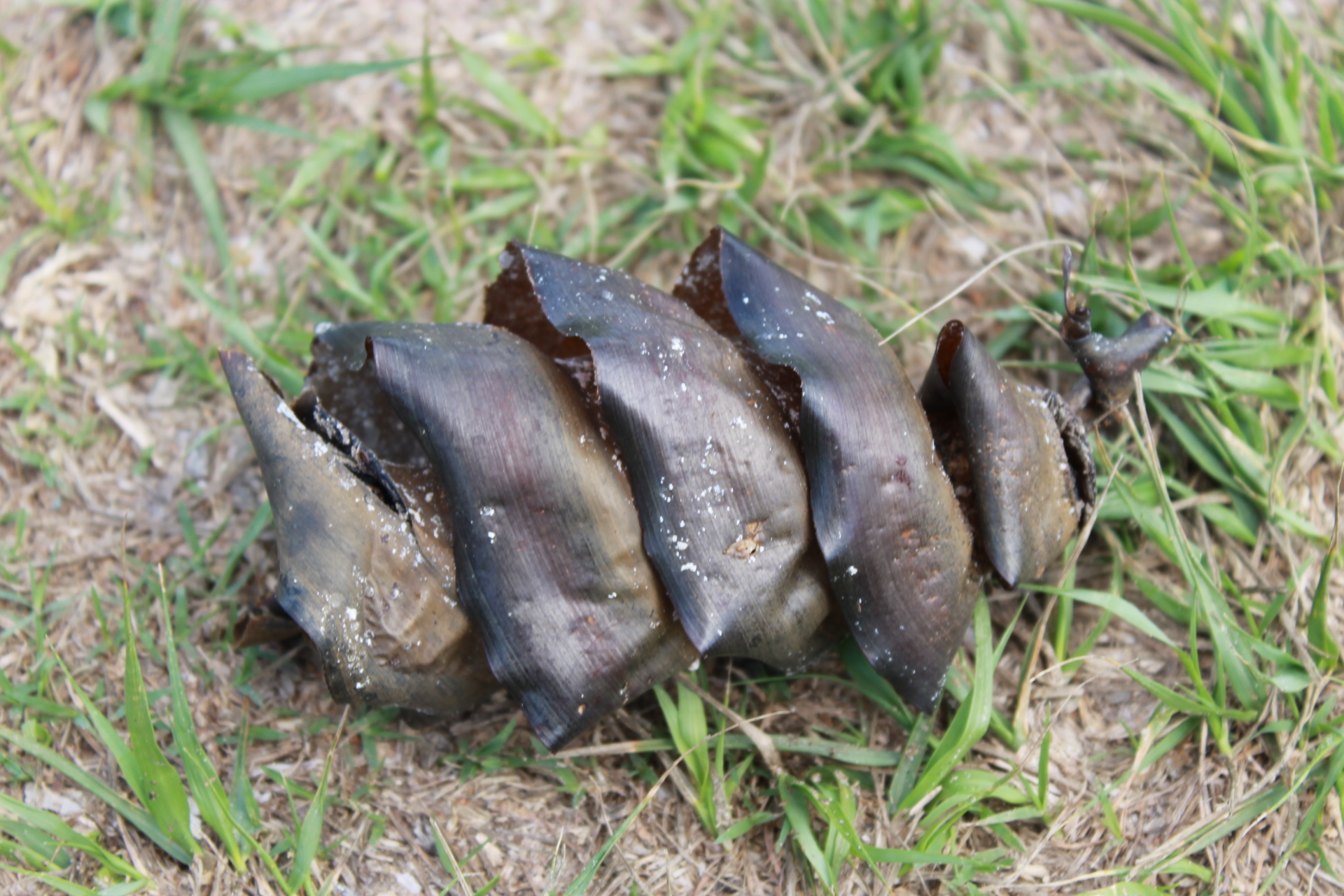
The Port Jackson shark (Heterodontus portusjacksoni) is a nocturnal, oviparous (egg laying) type of bullhead shark of the family Heterodontidae, found in the coastal region of southern Australia, including the waters off Port Jackson. It has a large, blunt head with prominent forehead ridges and dark brown harness-like markings on a lighter grey-brown body, and can grow up to 1.65 metres (5.5 ft) long. They are the largest in the genus Heterodontus.
The Port Jackson shark is a migratory species, traveling south in the summer and returning north to breed in the winter. It feeds on hard-shelled mollusks, crustaceans, sea urchins, and fish. Identification of this species is very easy due to the pattern of harness-like markings that cross the eyes, run along the back to the first dorsal fin, then cross the side of the body, in addition to the spine in front of both dorsal fins.
These sharks are are oviparous, meaning that they lay eggs rather than give live birth to their young. The species has an annual breeding cycle which begins in late August and continues until the middle of November. During this time, the female lays pairs of eggs every 8-17 days. As many as eight pairs can be laid during this period. The eggs mature for 10–11 months before the hatchlings, known as neonates, can break out of the egg capsule.
Port Jackson shark adults are often seen resting in caves in groups, and prefer to associate with specific sharks based on sex and size. Juvenile Port Jackson sharks, on the other hand, do not appear to be social. A captive study showed that these juveniles did not prefer to spend time next to other sharks, even when they were familiar with each other (i.e. tank mates). Juvenile Port Jackson sharks have unique personality traits, just like humans. Some were bolder than others when exploring a novel environment and they also reacted differently to a stressful situation (in choosing a freeze or flight response).
Juvenile Port Jackson sharks are also capable of learning to associate bubbles, LED lights, or sounds with receiving a food reward, can distinguish different quantities (i.e. count), and can learn by watching what other sharks are doing.
At least in some of these lab experiments males are shyer than females and boldness increases with consecutive trials of the same experiment. In experiments with different music genres, none of the sharks tested learned to discriminate between a jazz and a classical music stimulus.
Port Jackson Sharks are considered harmless to humans, although the teeth, whilst not large or sharp, can give a painful bite.
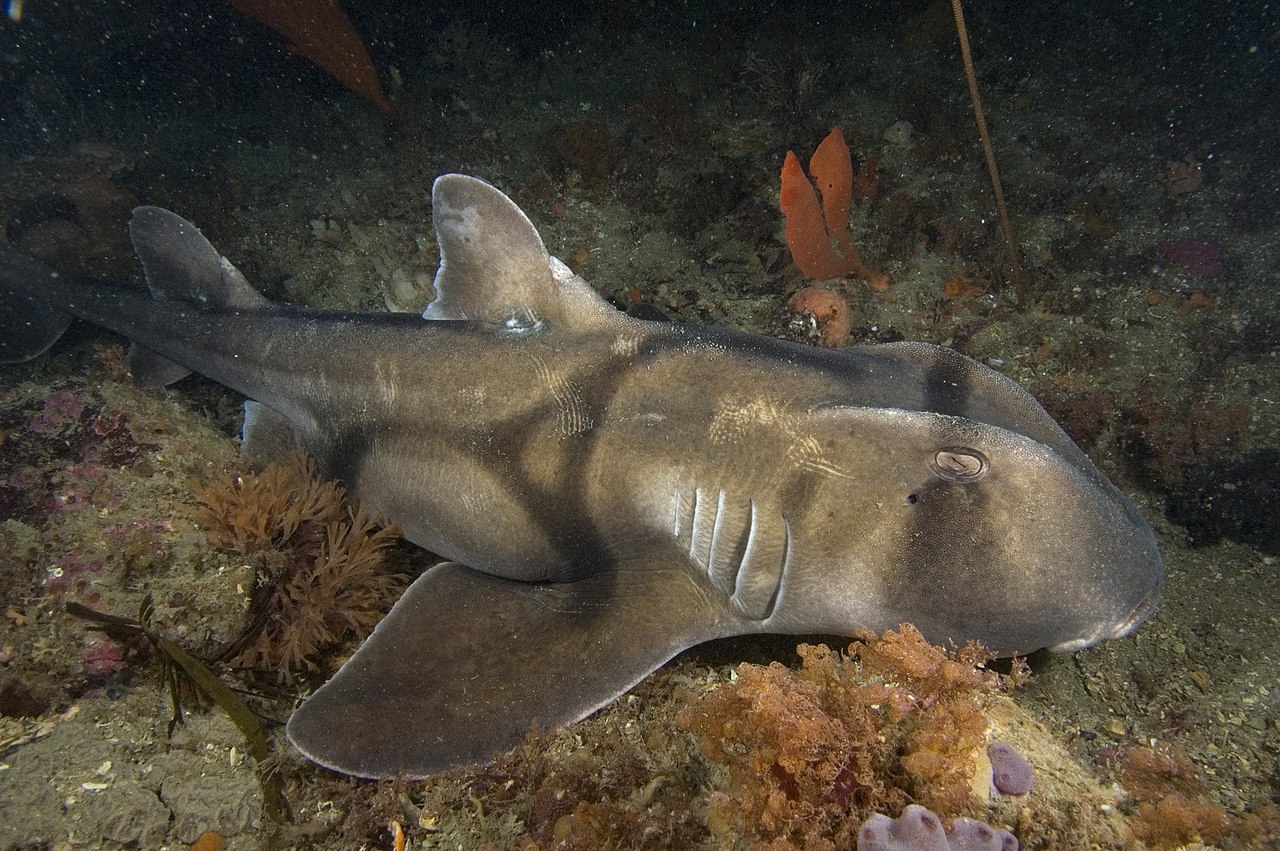
Heterodontus portusjacksoni. Photo: Mark Norman, Museums Victoria
Curious Kids: what is the largest penguin that ever lived?
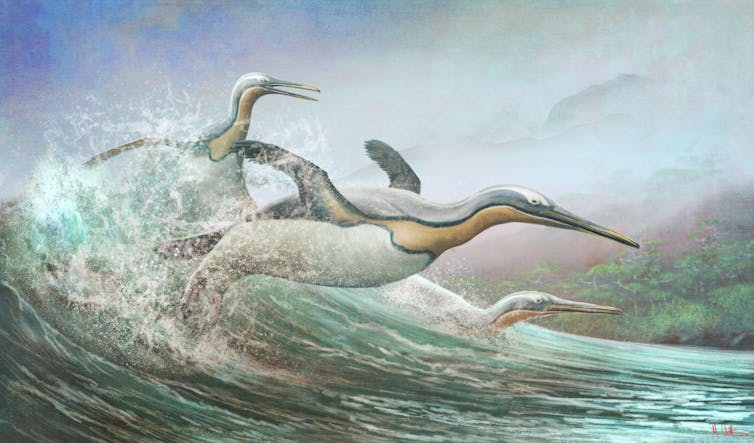
What is the largest penguin that ever lived? – Casey, age 6, Perth
Hi Casey, thanks for this great question!
Today the largest living penguin is the emperor penguin, which lives in Antarctica and is about one metre tall. The appropriately named little penguin is the smallest, standing only about as high as a ruler.
But penguins have swum in Earth’s oceans for more than 62 million years – and they were not always these sizes. Long before humans walked the Earth, some penguins would have stood as tall as a grown-up person.

Diving In
To understand how penguins once got so big, we need to go back to the very first ones.
The closest relatives of penguins today can actually fly through the air. These include petrels and the soaring albatrosses.

While waddling penguins might seem quite different to these seabirds, they’re quite alike in a number of ways. They share similarities in their skeletons, and both share distant relatives (great, great grandparents going back millions of years) that flew in the air.
Penguins can’t fly in the air anymore. Instead, they “fly” through the water — and doing both well isn’t an option.
For birds, water is a lot harder to fly through than air. But penguins have certain qualities that allow them to do this.
The wings of penguins are flippers. These are great for moving underwater, but not very helpful for flying above it. Their heavy bodies help them dive further and deeper so they can hunt for food. But being heavier makes flying in the air difficult.
While penguins’ distant relatives were small seabirds, over many years they gave up flight to become professional swimmers. The bigger they were, and the stronger their bones, the better they could dive.
Because penguins have heavier and stronger bones than air-flying birds, this means their bones are less likely to break. It also means we are more likely to find them as fossils (what’s left behind from ancient life) long after they die.
In fact, the bones of one kind of giant penguin (Kairuku waewaeroa) were discovered by school children.
Room To Grow
The asteroid that wiped out the dinosaurs (except birds!) 66 million years ago gave the distant relatives of penguins the perfect chance to go swimming.
Many of the animals that would have eaten them in the sea were gone, which meant they could go underwater without worrying about being eaten.
The oldest penguin bones we have belonged to birds that lived only a few million years after the asteroid hit, and come from Aotearoa, or New Zealand. These are similar to the bones of today’s penguins, so we think penguins probably stopped flying in the air some time soon after the asteroid event.
Some of these first penguins were enormous. One was the gigantic Kumimanu biceae, which was probably 1.7 metres tall (the same size as many human adults).
Kumimanu may have been one of the largest penguins ever. It probably weighed 100kg, whereas the emperor penguin weighs less than half of that.
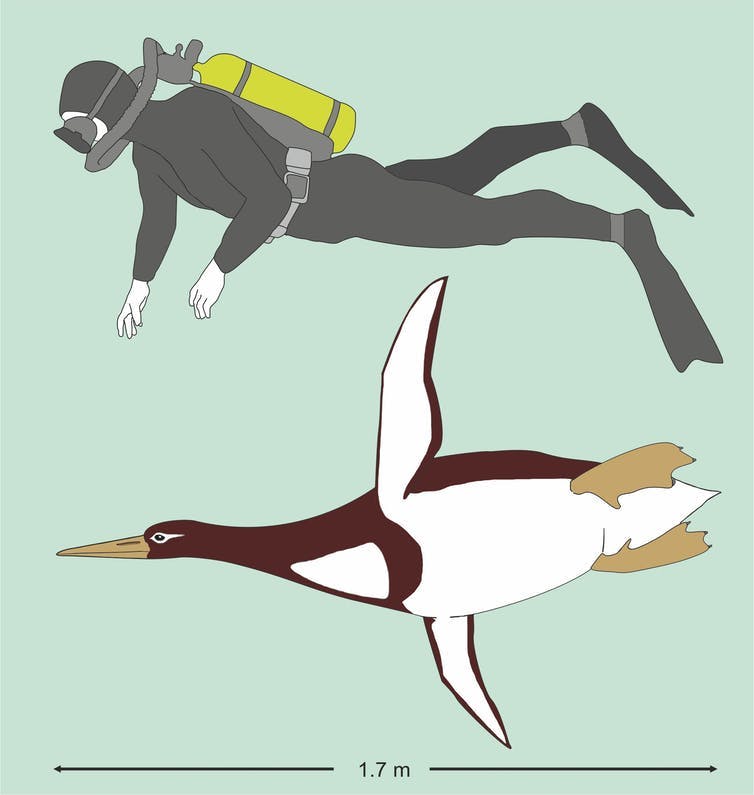
While many giant penguins lived in the millions of years after Kumimanu, the only penguin that may have been larger was the huge Palaeeudyptes klekowskii, which swam off the coast of Antarctica more than 34 million years ago. This penguin may have been two metres tall and weighed 115kg!.
As for what happened to giant penguins, they vanished about 15 million years ago and no one really knows why. There are still many questions, but with more fossil discoveries, we might find some answers!![]()
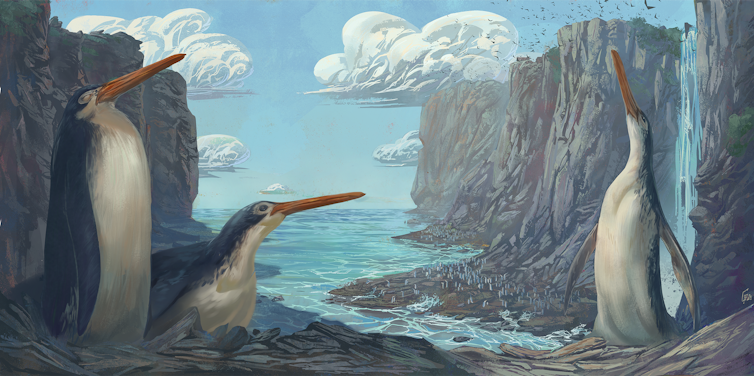
Jacob C. Blokland, Vertebrate Palaeontology PhD Candidate and Casual Academic, Flinders University
This article is republished from The Conversation under a Creative Commons license. Read the original article.
COTA CE’s Corner March 2022: Election Time
Dementia Patients Struggle To Cope With Change Because Of Damage To General Intelligence Brain Networks
Stealth Nanomedicines Combat Cancer And Cut Toxic Effects Of Chemo
How a makeshift PoW chapel from WWII continues to connect Ukrainians and Britons

On the outside, it is a shabby corrugated iron hut. But 70 years ago, in the aftermath of the Second World War, this small shed in a rural southern corner of Scotland became a place of worship for a group of devout Ukrainian prisoners of war (PoWs). Today it operates as a hub for local community efforts to send aid to refugees fleeing Putin’s invasion, underscoring once more the links between the UK and Ukraine.
The chapel is part of Hallmuir PoW camp, built in 1942 near Lockerbie, to house German and Italian prisoners. During the war years, it was one of hundreds of similar sites which housed enemy servicemen seized across the world.
After peace came in 1945, the German and Italian PoWs were repatriated. Yet Ukrainian troops, mostly captured between 1943 and 1945 whilst serving in the 14th “Galicia” Division of the Waffen-SS, were not so fortunate. Although the the Germans invaded and occupied Ukraine in 1941, the Galicia Division were remodelled as the Ukrainian National Army in March 1945, and by May 1945 more than 8,000 of them found themselves in Allied captivity in Rimini, on Italy’s Adriatic coastline.
Post-war provisions dictated that PoWs who could be deemed Soviet citizens were to be returned to the Soviet Union. However, given the association of these Ukrainian troops with the Nazi regime, near-certain death or hardship awaited them on their return.
The Ukrainian Greek Catholic Church, backed by Pope Pius XII, pleaded for clemency from American and British authorities, arguing the Ukrainian prisoners were “good Catholics and fervent anti-communists”. The Allies yielded, and rebranded the Ukrainian PoWs as “surrendered enemy personnel”, enabling them to avoid Soviet repatriation. Instead they were allowed to choose between resettlement in Canada or the UK.

Life In The Camp
By 1947, Hallmuir camp had fallen into disuse. But in May of that year, just over 7,000 Ukrainian captives docked at Glasgow, to be distributed across camps in the UK. Around 450 were transferred to Hallmuir, and the experiences of wartime captivity were soon resurrected. This marked the beginning of a lasting settlement of Ukrainians in the UK.
Occupying 40 accommodation huts, the Ukrainians were deployed by the Ministry of Agriculture to labour on regional farms and in the expansive Galloway forest. Daily life was far from easy, but undoubtedly preferable to the sinister fate which had awaited Ukrainians in the Soviet Union. The prisoners soon began to make an impression on the the camp. They fashioned a garden and orchard, and repurposed one hut into a striking Ukrainian Greek Orthodox chapel.

By 1951, the Hallmuir Ukrainians were permitted to leave captivity. Many opted to remain in the Galloway region, partly captured by the charms of south-west Scotland, and partly due to reluctance to venture back to the Soviet Union. To this day, ancestors of the Ukrainian prisoners are firmly integrated into the local area, and Scotland’s capital, Edinburgh, is twinned with Kyiv.
Preserving Hallmuir
Over the past two decades, there have been efforts to preserve Hallmuir for posterity. Now, just five camp buildings remain on the farm site, of which the Ukrainian chapel is the best preserved. It has been the object of restoration efforts, and now closely resembles its appearance as it was in the 1940s.
The Pufkyj family, direct descendants of one of the Ukrainians who settled near Dumfries, have been instrumental in campaigning for heritage status. In 2021, former Ukraine minister of foreign affairs and current ambassador to the UK, Vadym Prystaiko, paid a goodwill visit to Hallmuir.
In terms of conservation, the uncertain future of the Hallmuir site is just one example of the important historical connections that risk being lost. Without a concerted effort to protect marginalised historical sites in the UK, we risk losing the diverse threads which underpin our society.
History is not just a broad sweep of “great men” and grand narratives. We need the lesser known – and neglected – stories of places like Hallmuir to remind us of the humanity and connection that arise from desperate situations. Just a stone’s throw from Hallmuir is Dunscore, the birthplace of Jane Haining, a Scottish missionary who perished at Auschwitz. These are the wartime stories of the humble figures that so often exemplify courage and resilience. Humanity is a universal phenomenon that transcends national borders.

In an immediate sense, the Hallmuir story reminds us that the Ukraine crisis is not some distant foreign affair: it is very much our concern, and has direct cultural implications for British society. In previous testing times, Britain offered a new home for Ukrainians displaced by conflict. As a new humanitarian refugee conflict looms, we must insist that this happens again in 2022.
In wider terms, Hallmuir is evidence of the many multicultural influences which continue to shape this country. Today, there is a vibrant Ukrainian community numbering thousands spread across the British Isles. But substitute Ukraine for any other nation, and it is possible to find historical links to most pockets of the UK.
This unassuming chapel hut provides evidence of how historical sites sites are tied to current events. Perhaps history does not repeat itself, but sometimes it echoes. Just as it happened during WWII, the freedom of a sovereign European nation is being threatened by a merciless tyrant. Even the smallest connections from 70 years ago show that we are linked by myriad threads, which strengthen in times of hardship and need.![]()
Daniel Adamson, PhD Candidate in History, Durham University
This article is republished from The Conversation under a Creative Commons license. Read the original article.
New Program Makes Access To Residential Aged Care Volunteers Easier Than Ever
- leisure activities (e.g. reading, music)
- access to and supervision in outdoor spaces or the community
- physical activity and exercise
- companionship, conversation and social engagement
- mobilising support in aid of above activities
- culturally specific and individually appropriate support
- administration support (e.g. answering calls, internal message running, restocking of PPE).
Damage To Inner Ear System Predicts Fall Risk Among People With Alzheimer's Disease
The Seekers; I'll Never Find Another You
Some Of The World’s Lowest Rates Of Dementia Found In Amazonian Indigenous Groups
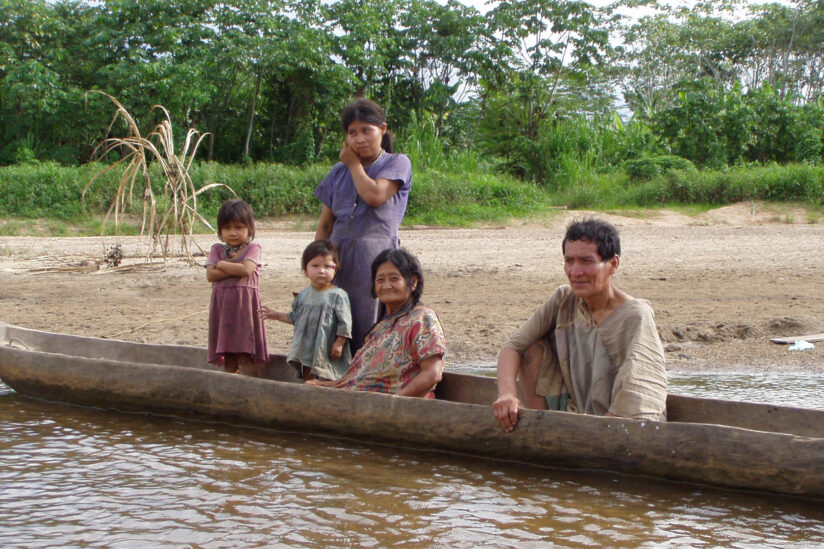
Even mild COVID can cause brain shrinkage and affect mental function, new study shows

Most of what we know about how COVID can affect the brain has come from studies of severe infection. In people with severe COVID, inflammatory cells from outside the brain can enter brain tissue and spread inflammation. There may be changes to blood vessels. Brain cells can even have changes similar to those seen in people with Alzheimer’s disease.
For the first time, a new study has investigated the effects of mild COVID (that is, infection that doesn’t lead to a hospital admission) on the brain. The findings may further explain some of the brain changes contributing to long COVID.
Brain Scans And Tests Show Changes
Many people who have had COVID report feelings of “brain fog”, fatigue and problems with concentration and memory long after their initial symptoms resolve. These problems, collectively referred to as “long COVID”, may last for months even after mild infection.
Long COVID is very common, and may affect more than half of the people who catch COVID, even if they have a mild case.
Scientists collected data as part of the massive UK Biobank database. They looked at brain magnetic resonance imaging (MRI) scans and tests of brain function in 785 volunteers who were assessed before the pandemic. They then compared this to the same data collected three years later, when about half of those participants had mild COVID infection, and the other half had not caught COVID. This allowed the scientists to determine the specific effects of mild COVID infection on brain structure and function.
The group who had mild COVID an average of five months beforehand had thinning of brain tissue in several brain regions, ranging from 0.2% to around 2% compared to their pre-COVID scan. This is equivalent to between one and six years of normal brain ageing. Affected brain regions included the parahippocampal gyrus (an area related to memory) and the orbitofrontal cortex, which is located at the front of the brain and is important for smell and taste.
The post-COVID group also showed a reduction in overall brain size between their MRI scans that wasn’t seen in the non-COVID group, and had altered connections between different brain regions in the olfactory cortex, an area related to smell.
They performed worse in a test for attention and mental flexibility, a finding that was associated with volume reductions within a part of the cerebellum related to smell and social relationships.

Comparing To Other Illnesses
To show these changes were specific to COVID and not just related to having a respiratory illness, the scientists also looked at a group of people who had pneumonia. They did not see the same changes, confirming they are related to COVID.
Decreases in brain volume are common to many brain diseases and disorders associated with degeneration, and have been found in people with mild cognitive impairment, Alzheimer’s disease, depression and traumatic brain injury, among others.
Problems with memory and attention are also frequent for people with these diseases and disorders, indicating mild COVID infection may accelerate brain degeneration. These changes could explain the reported symptoms of long COVID, such as brain fog.
The study did not look at the mechanisms of mild COVID in the brain. However, the authors suggest this could be due to inflammation, degeneration which spreads through the brain pathways associated with smell, or sensory deprivation due to loss of smell.
The Same For Everyone?
So does this study prove all people who have had mild COVID infections will have these same brain changes and long-term brain degeneration? Not necessarily.
There are several important things we still do not know. This includes whether these brain changes will get worse over time, or whether they will go back to normal or previous levels of function. More research over a long time would help us understand the trajectory of brain changes.
This study also only included people aged 51–81, so we do not know whether these findings are relevant for younger people or children.
The brain changes found in this study were more pronounced in the older participants, so it could be that older people are more susceptible. Another study is needed to determine whether the same brain alterations would occur in younger people, or whether these findings are common only to older people.
There were some differences between the groups before COVID, with smaller volumes of areas deep within the brain. However, these were in different brain areas to those affected after COVID.
The scientists also found slightly reduced scores for brain functions of thinking and remembering in the group that went on to have COVID. This study did not specifically exclude people with degenerative brain conditions such as Alzheimer’s or Parkinson’s diseases, but the scientists do not think these would explain the changes they found.
Effects Of Different Variants And Vaccination Unknown
Because of the nature of the study, information about the strain of COVID people were infected with was not available. So we can’t assume the findings would be the same for people with the now more prevalent Omicron strain.
We also can’t determine the effect vaccination may have in lessening brain changes. Given the timing of the study, it is likely most of the people in the post-COVID group were infected in 2020, so may not have been vaccinated.
This study provides the first important information about brain changes in people with mild COVID infection. Until we have all the information, we should be alert but not alarmed at emerging findings.![]()
Sarah Hellewell, Research Fellow, Faculty of Health Sciences, Curtin University, and The Perron Institute for Neurological and Translational Science, Curtin University
This article is republished from The Conversation under a Creative Commons license. Read the original article.
Heavy Water - Waynes World
Word Of The Week: Worth
adjective
1. equivalent in value to the sum or item specified.
2. sufficiently good, important, or interesting to be treated or regarded in the way specified.
noun
1. the level at which someone or something deserves to be valued or rated.
2. the amount that could be achieved or produced in a specified time.
Premier’s Reading Challenge Now Open
Young And Emerging Artists Showcase Talents At MAG&M
Ocean Film Festival World Tour 2022
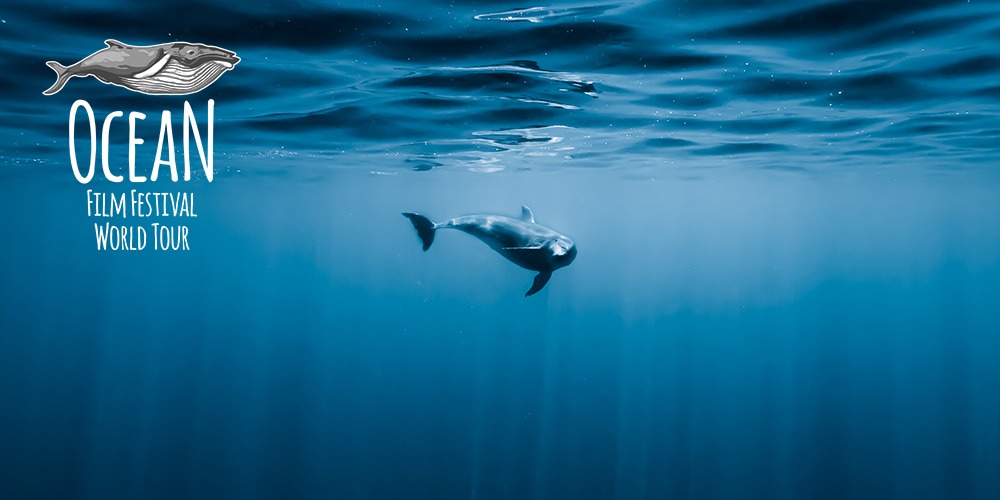
Military History Lesson On Offer For Students
Bruno Mars - Just The Way You Are (2010)
Maroon 5 - Moves Like Jagger Ft. Christina Aguilera (Band Edit - 2011)
TAFE NSW Helps Young Newport Student Gain Foothold In Tourism And Events Industry
 March 8, 2022
March 8, 2022Vitamin D2 and D3: what’s the difference and which should you take?

Vitamin D is important for maintaining health, as it has many roles in the human body. But there is more than one form of vitamin D, and recent research suggests that these forms may have different effects. So what are the different types of vitamin D, and is one really more beneficial than the other?
Although medical conditions later associated with vitamin D deficiency, such as the bone disease rickets, have been known about since the 17th century, vitamin D itself wasn’t identified until the early 20th century. This discovery led to Adolf Windaus winning the Nobel prize for chemistry in 1928.
The vitamin D family actually includes five molecules, with the two most important being vitamin D2 and D3. These molecules are also known as ergocalciferol and cholecalciferol, respectively. While both of these types of vitamin D contribute to our health, they differ in how we get them.
Dietary vitamin D2 generally comes from plants, particularly mushrooms and yeast, whereas we get vitamin D3 from animal sources, such as oily fish, liver and eggs. Both forms of vitamin D are also available in dietary supplements.
What most people probably don’t know is that most of our vitamin D comes from exposing our skin to sunlight. When our skin is exposed to the sun, ultraviolet rays convert a precursor molecule called 7-dehydrocholesterol into vitamin D3. This important effect of exposure to the sun explains why people living at more extreme latitudes, or people who have darker skin, are more prone to vitamin D deficiency. Melanin, a pigment in the skin, blocks ultraviolet rays from activating 7-dehydrocholesterol, thus limiting D3 production. Wearing clothing or sunscreen has a similar effect.

Both vitamins D2 and D3 are essentially inactive until they go through two processes in the body. First, the liver changes their chemical structure to form a molecule known as calcidiol. This is the form in which vitamin D is stored in the body. Calcidiol is then further altered in the kidneys to form calcitriol, the active form of the hormone. It is calcitriol that is responsible for the biological actions of vitamin D, including helping bones to form, metabolising calcium and supporting how our immune system works.
Technically, vitamin D isn’t a vitamin at all, but a pro-hormone. This means the body converts it into an active hormone. All hormones have receptors (on bone cells, muscle cells, white blood cells) that they bind to and activate, like a key unlocking a lock. Vitamin D2 has the same affinity for the vitamin D receptor as vitamin D3, meaning neither form is better at binding to its receptor.
Different Effects On The Immune System
A recent study found that vitamin D2 and D3 supplementation had different effects on genes important for immune function. These findings are significant, as most previous research has failed to find much difference in the effect of supplementation with either vitamin D2 or D3.
Most of the research published to date has suggested that the main difference between vitamin D2 and D3 supplementation is the effect on circulating vitamin D levels in the bloodstream. Studies have repeatedly shown that vitamin D3 is superior at raising levels of vitamin D in the body. These findings were supported by a recent review of the evidence which found that vitamin D3 supplementation increased vitamin D levels in the body better than vitamin D2. But not all studies agree.
Very few studies support vitamin D2 supplementation being superior to vitamin D3. One trial showed that vitamin D2 was better at treating immune issues in patients who were on steroid therapy. However, other than increasing vitamin D levels in the body, there is not much evidence that vitamin D3 supplements are better than vitamin D2 supplements. One study found that vitamin D3 improved calcium levels more than vitamin D2. But we need more research to provide definitive answers.
So Which Should I Take?
Vitamin D deficiency is now more prevalent than ever, with around a billion people worldwide being vitamin D deficient. It is important that people at risk of vitamin D deficiency – older adults, people living in less sunny climates and people with darker skin – take vitamin D supplements.
Health professionals recommend that most people take 10 micrograms of vitamin D a day, especially in winter. It would appear that vitamin D3 supplements are the superior option for maintaining vitamin D levels, but short exposure of the skin to the sun, even on a cloudy day, will also help you keep healthy vitamin D levels.![]()
James Brown, Associate Professor in Biology and Biomedical Science, Aston University
This article is republished from The Conversation under a Creative Commons license. Read the original article.
You’re not tone deaf and you know more about music than you think

Think of the last time you were at a birthday party and the obligatory rendition of “Happy Birthday” began. If you’re like most people, you probably joined in without a second thought. Would you be surprised to know that the version of “Happy Birthday” you’re used to singing might be different every time?
The musical key that “Happy Birthday” is sung in often depends on the note that the person who starts the song chooses to sing first. This starting point determines the key for the rest of the song. We’re still able to recognize the song because the intervals — the differences in pitch between notes — remain the same and the notes just shift up or down depending on where that starting point is.
This act of shifting pitches up or down but preserving the intervals between notes is called transposition and although it may not seem like a simple task, people tend to handle it quite well. In one study, both children and adults easily recognized common songs like “Happy Birthday” and “Twinkle Twinkle Little Star” after they were presented at various keys.
How is it that most people can perform this complex musical task even in the absence of any formal musical training? Even though you may not realize it, you actually have a lot more musical knowledge than you might think.
Pattern Recognition
Where does this knowledge of music come from? You get it from your everyday life without realizing it thanks to a process called statistical learning. This concept suggests that we learn about our environment through passive exposure and that we constantly use this knowledge to interpret the world around us. Statistical learning is how we learn to recognize patterns and can be used to explain complex learning processes like language acquisition. Significantly, this process is almost entirely subconscious — we learn just by being exposed to new information.
In the case of music, we have no shortage of experience to draw from. We hear music constantly, whether intentionally or as a bystander. Riding in a car, standing in an elevator, sitting in a waiting room — we can’t help but be exposed to music. And we gain something from this passive exposure: We become familiar with the patterns and regularities of the music of our culture and we develop an implicit knowledge of music.
This process happens very early on. Eight-month-old babies can recognize patterns in sequences of tones and some studies show that even at three months of age, babies can recognize changes in short melodies. This implicit musical knowledge only grows as we get older and is why most people might not be as musically challenged as they think.

In one study, people were recruited to sing in a public park and their performance was compared to that of professional singers. The results showed that the amateur singers’ pitch and timing accuracy was close to that of experts. This aligns with other research showing that people without musical training also perform well on pitch discrimination tasks in which they have to recognize the difference between two tones that vary slightly in pitch.
These results might seem surprising at first, but they are backed by large-scale studies as well. While many people might claim to be tone deaf, some research estimates that the rate of congenital amusia — a condition in which a person is unable to recognize or process musical information — is less than two per cent in the general population.
Cultural Expectations
Our implicit knowledge of music also leads us to develop expectations of how music should sound. That’s why music from other cultures might sound strange at first — it deviates from the expectations you’ve developed based on the music of your own culture.
This is also true across musical genres. Jazz musicians were found to be more accurate at predicting changes in jazz music than classical musicians and non-musicians.
Our expectations are also responsible for generating musical pleasure and the desire to move when listening to music, and have been used as a tool by artists and composers for centuries to elicit stronger emotions.
So although you might not be aware of it, you’re a walking music processing machine. And next time you find yourself singing “Happy Birthday,” you can sing a bit more confidently with your hidden music expertise in mind.![]()
Alexander Albury, PhD Candidate, Psychology, Concordia University and Virgina Penhune, Professor, Psychology, Concordia University
This article is republished from The Conversation under a Creative Commons license. Read the original article.
Bias be gone! Can our unconscious prejudices be overcome?

Bias comes in more flavours than Baskin-Robbins ice cream. Well known biases of gender, race, age, class, weight, and media barely scratch the surface.
Psychologists catalogue numerous biases of hindsight and foresight, attention and memory, reasoning and intuition, as well as a litany of mental illusions, fallacies, neglects, gaps and aversions. There is even the bias blindspot – our mistaken belief we are less biased than others – and the “bias bias”: the tendency to use the concept of bias too freely.
Review: The End of Bias: How We Change Our Minds - Jessica Nordell (Granta)
Behind this proliferation of biases is the fundamental insight that human thinking is fallible. We fall prey to a range of errors that pull and push us away from the ideals of rationality and fairness. If our departures from good thinking and right action stem from these biases and errors, then identifying and remedying them is an urgent task.
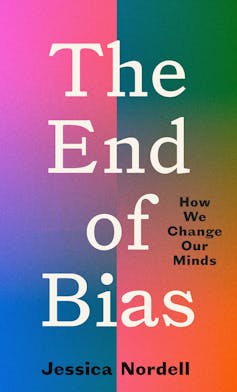
Jessica Nordell’s The End of Bias is a powerful expression of the view that bias is at the root of many social divisions and inequalities. Rather than simply making this diagnosis, Nordell presents a strong case that bias can be uprooted. Her book is a bracing review of the state of the science of bias, and especially how its lessons can be applied to promote progressive social change.
Nordell begins her tour de force with an examination of the modern social psychology of prejudice.
Recognising that racism, sexism, and other forms of prejudice persist, despite declines in overt bigotry, psychologists have come to the view that many social biases are automatic, unconscious, or habitual. We can sincerely proclaim our commitment to egalitarian values, but still discriminate in our actions and reactions.
The early chapters of The End of Bias explore the psychology of these forms of discrimination, introducing the reader to recent understandings of stereotyping, priming (the automatic triggering of mental associations), and cognition outside awareness. Nordell shows how discrimination can be subtle in nature, but powerful in effect. Its thousand cuts compound over time.
Unacknowledged biases can lead doctors to withhold pain medications from groups stereotyped as overly emotional or unfeeling, one recent study finding that some white medical trainees believe Black people have literally thicker skin than Whites. In the medical context, it can also lead to missed diagnoses and harsh or dismissive treatment decisions.
Unconscious biases can lead police officers to overestimate the physical threat posed by Black suspects and to mistakenly perceive weapons and hostile intent, often with tragic consequences.
Nordell argues that biases in school settings underlie failures to identify minority students as gifted and the unequal use of discipline. Related biases obstruct the hiring of under-represented groups in universities and other organisations, and restrict their progression up the professional ladder.
Changing Hearts And Minds
The End of Bias starts with psychology, but it doesn’t neglect the systemic, institutional, and cultural dimensions of discrimination and inequality. Nordell neither reduces bias down to the individual, nor up to social structure.
She recognises how mental biases and societal practices are mutually reinforcing. Enduring inequalities won’t crumble under the force of a few diversity seminars, but neither will top-down solutions work without changes in hearts and minds.
This stereoscopic focus on individual thinking and broader social systems is clearest in Nordell’s explorations of how bias can be overcome. Her emphasis throughout the book is on real world interventions that work. These programs range from workshops that target individuals, to inter-group contact experiences, such as jigsaw classrooms and integrated sporting contests, to shifts in institutional processes and social norms.
Among the de-biasing interventions Nordell examines are genderless pre-school education, mindfulness training for police officers, role modelling for women in STEM disciplines, and community policing initiatives.
Change can be made by simple tweaks and nudges, but also by wholesale transformations of organisational culture. The repertoire of promising interventions is large and growing, although Nordell acknowledges that the evidence for their efficacy is often limited and some interventions can backfire.
She underscores how consciousness raising is rarely sufficient: if bias is often habitual and automatic, mere awareness and good intentions will not overcome it. Similarly, although our tendency to view one another through the distorting lens of group stereotypes might tempt us to de-emphasise social categories, Nordell argues that this is not a desirable option. Colourblindness is not a realistic aspiration in a world where race matters.
Limitations
The scope of The End of Bias is international. Nordell’s case studies come from Kosovo, Rwanda and Sweden. But her main point of reference is the USA, and its racial divides in particular. The book explicitly addresses an American audience, though much of its message translates into other contexts.
Nordell’s case for overcoming bias is passionate and frequently persuasive, but it is has its limitations. At times, she overstates the firmness of the evidence on which the science of bias is built.
For example, strong early claims about the predictive power of measures of unconscious bias have faced serious challenges. How we should interpret the meaning of such apparent biases is also under a cloud. Should they be treated as signs of a person’s automatic prejudice or merely as evidence of their exposure to an unequal society?
Similarly, Nordell’s references to “stereotype threat” – people’s impaired performance when they fear they will be judged negatively based on a group stereotype – overlook substantial challenges to the robustness of the phenomenon.
The concept of microaggression, a term coined to describe implicit or unconscious forms of discriminatory behaviour, is explored uncritically, without acknowledging how problematic its definition and use have become, or whether it is a helpful way to understand the undoubted reality of subtle bias.
More generally, we might question whether bias is a sufficiently solid concept to bear the explanatory weight Nordell places on it. What counts as a bias is never defined. It functions as an all-purpose idea that can stretch to cover almost any social phenomenon.

Indeed, bias has several weaknesses as an account of social inequalities. It implies that biases are grounded in irrationality, when they often reflect real differences in interests, values, and material resources. Such differences cannot be reduced to the mental errors of one side. As work on the “bias bias” reveals, what can superficially appear to be a cognitive error often is not.
Nordell occasionally takes the “bias bias” to extremes. She pictures biases as comprehensive breaks with reality, sometimes describing them in psychiatric terms. She refers to “White psychosis” and writes that “There is, in the privileged mind, ongoing delusion”. Biased individuals, according to Nordell, “do not see a person. They see a person-shaped daydream.”
This view of bias as blindness, madness, fantasy and delusion – not to mention the suggestion that it is confined to some groups or individuals – is an extreme departure from the psychology of bias with which the book begins.
Bias has additional problems as a sovereign concept for understanding social injustice. As systematic tendencies and patterns that appear in the aggregate, biases are often very hard to identify as the causes of specific events, just as it is challenging to identify a known risk factor for a disease as the cause of a particular person’s case. Attributing specific events and outcomes to bias is often done too quickly and confidently. Other factors may be at play.
Biases are usually vulnerable to alternative explanations and confounding factors. There is ongoing debate about the extent to which some race-related biases are at least partially explained by socioeconomic class. Similarly, a significant proportion of the gender wage gap reflects motherhood penalties rather than gender itself.
If these alternative explanations have merit, then some supposed race and gender biases may not be, in fact, primarily about race and gender at all. Such uncertainty about whether apparent biases might be explained by other factors is a significant problem for the bias-first perspective.

The End of Bias makes its case with passion and moral force. At times, its intensity is expressed with an all but religious zeal that may seem foreign to Australian ears. The path to ridding oneself of bias is presented almost as a spiritual quest or conversion, complete with confessions, revelations and purifications.
The historical origins of contemporary American inequalities are described as indelible original sins.
“Perhaps ‘White fragility’ or ‘male fragility’,” Nordell writes, “… is actually a felt connection to an old moral injury, one that could even have been committed by one’s forebears.”
Combined with its polarised analysis of bias as the psychosis of the unenlightened, reminiscent of a world of angels and demons, The End of Bias seems coloured by American religiosity.
It remains a powerful book, regardless. Nordell paints an optimistic picture of our growing capacity to reduce bias. She offers a valuable and lucid introduction to the social psychology of prejudice. Some readers will have their commitment to the fight against bias strengthened, others may baulk at how that fight is framed, but all will be educated.![]()
Nick Haslam, Professor of Psychology, The University of Melbourne
This article is republished from The Conversation under a Creative Commons license. Read the original article.
The book that changed me: how H.H. Finlayson’s The Red Centre helped me see country – and what we have done to it
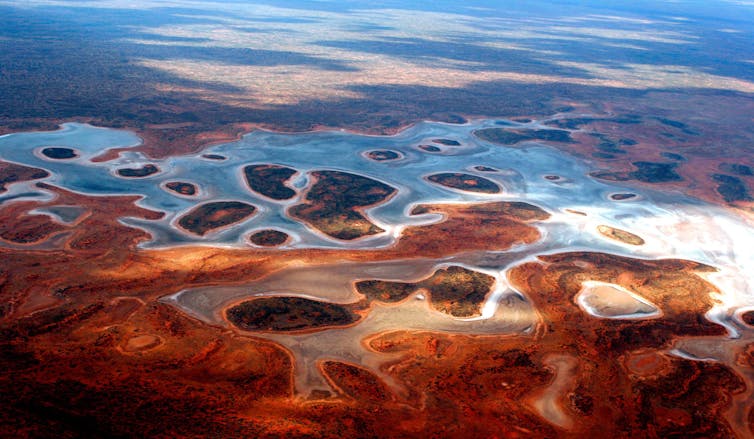
In a new series, writers nominate a book that changed their life – or at least their thinking.
Books have been good to me: they have nurtured me, inspired me, taught me about life, helped me when the world seems hard. I love Russian poetry; there are shelves of fiction I enjoy. But here I want to tell of the books that helped shape my thinking about the natural environment.
There were of course many identification (field) guides that gave me the foundational knowledge of the names of plants and animals – the cast of nature. In my boyhood, these were pretty primitive, but indispensable. Guides now are far flasher. They also enticed me to seek the species shown in these books I hadn’t yet encountered, an eternal quest.
But field guides are prosaic fare. I yearned also to understand the environment, to “see” country. I was, and still am, fascinated with the puzzle of it all – how the components of nature fit together, and how the whole functions.
A few books I came across in my youth were revelatory. In Barbara York Main’s Between Wodjil and Tor (1967), the country of south-western Australia comes alive, its nature exquisitely observed, the stories and marvels of its small things – so many spiders leading such strange lives – intricately linked with a broader narrative of the workings of the landscape.
J.A. Baker’s The Peregrine (1967) provides an astonishingly acute reading of nature: the author obsessed with, almost becoming, the birds he stalks – he has succeeded in seeing the world as another species does, privileging his reader to do so also. And the verve of the writing! “We are the killers. We stink of death. We carry it with us. It sticks to us like frost. We cannot tear it away”.
I liked Graham Pizzey’s A Time to Look (1958) for its gentle evocation and appreciation of the wonder of Australian nature and its caring portraits of the lives of birds. In Nightwatchmen of Bush and Plain (1972) David Fleay is a detective, unlocking the dark mystery of owls; almost a lover in the intimacy of his connection with them.
But the most formative book for me was H.H. Finlayson’s 1935 classic The Red Centre. His biography is called A Truly Remarkable Man, and it is a fitting title.

Finlayson (1895-1991) lived a life of challenges. Experimenting with explosives at 15 (as one does), he blew off parts of most fingers on his left hand. Evidently unwisely, he persisted on this course and two years later another explosion resulted in the loss of what remained of his left hand, much of his right thumb and the sight in one eye.
A Brilliant, Perceptive Observer
Resolute and resourceful, he spent much of his life, often solitarily, studying wildlife across remote Australia. From the 1920s to the 1950s, these expeditions spanned the cusp of the devastation of the Australian mammal fauna.
Finlayson was the last to collect and record many of these mammal species: he witnessed this loss. But in his many scientific papers, and in The Red Centre, he also foretold it, explained it and mourned it.
Species that are now extinct, such as the Desert rat-kangaroo and Toolache wallaby, come alive in Finlayson’s words. For several species, his notes are all that has been – will ever be – reported of their ecology.
He was a brilliant and perceptive observer, and could portray the form, the behaviour, the fit of an animal to its environment. I can see them still from his words.
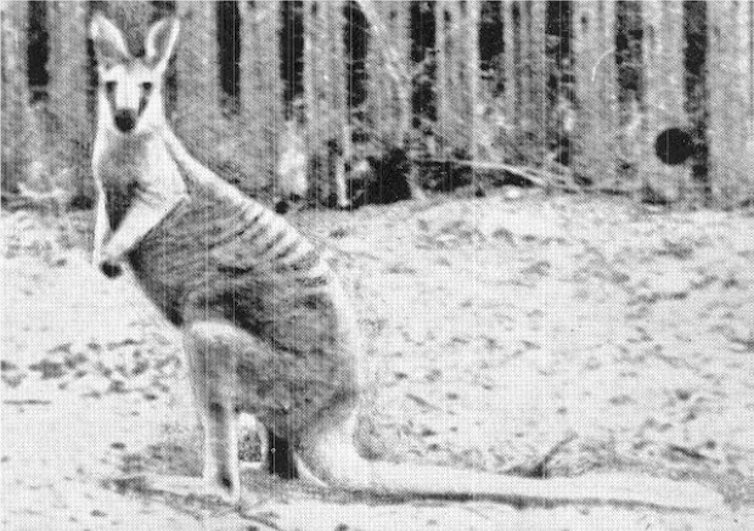
And he wrote beautifully. Musing in The Red Centre on the losses:
It is not so much, however, that species are exterminated by the introduction of stock, though this has happened often enough, but the complex equilibrium which governs long-established floras and faunas is drastically disturbed or even demolished altogether. Some forms are favoured at the expense of others; habits are altered; distribution is modified, and much evidence of the past history of the life of the country slips suddenly into obscurity … The old Australia is passing.
The environment which moulded the most remarkable fauna in the world is beset on all sides by influences which are reducing it to a medley of semi-artificial environments, in which the original plan is lost and the final outcome of which no man may predict.
From more than 80 years ago, these words still haunt; and they still describe the ongoing loss of Australian nature – due to what we have done to this country.
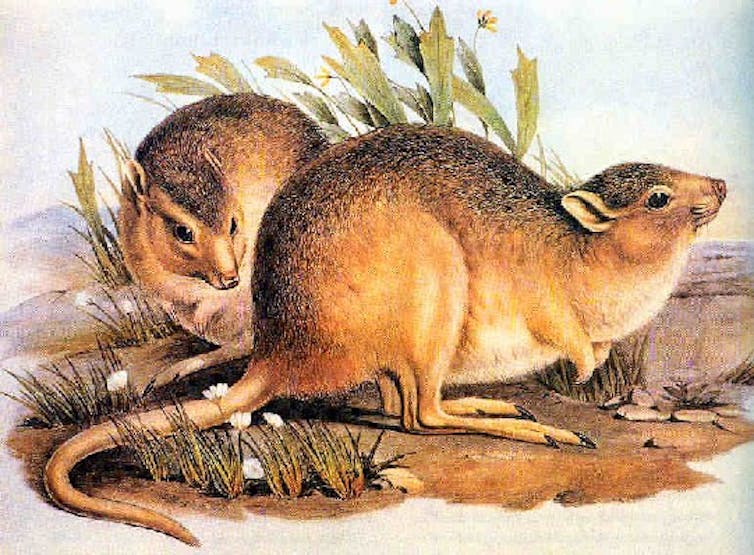
Finlayson’s ecological understanding was profound. He could read the landscape. He gifts this understanding to the reader of The Red Centre.
Much of my career as an ecologist has been inspired by, and attempts to follow, Finlayson’s capability to see and feel country; and to better appreciate what we may lose, and how imminent such losses can be.

Of course, the ecological perceptiveness displayed in The Red Centre and Finlayson’s scientific papers owes much to his long association with and respect for the Indigenous people. Finlayson understood the connections of Indigenous people with country, and in The Red Centre often reveres and celebrates that knowledge and culture.
A present to me from a friend long ago, my copy of The Red Centre is older than me, mostly broken (it has lost its cover), much read. It is worth nothing; it is priceless.
It is a classic of Australian writing on the environment, an exquisite and poignant account of a now-lost nature, an enduring blueprint for understanding our country. I owe a lot to it.![]()
John Woinarski, Professor (conservation biology), Charles Darwin University
This article is republished from The Conversation under a Creative Commons license. Read the original article.
The Godfather at 50: set among the American Mafia of the 40s, Coppola’s film is unmistakably a film of the disillusioned 70s

When it was released 50 years ago, The Godfather won a swag of Oscars and hailed director Francis Ford Coppola as the voice of a new auteur. But timing is, as they say, everything.
The story of an ageing Mafia Don and his family in New York City from 1945 to 1955, The Godfather is a sweeping saga of the trials and tribulations of running a criminal organisation.
There are two timelines that need to be looked at when watching The Godfather: when it was set, and when it was made. They are inextricably linked, yet polar opposites of the moral, cultural and social fabric of the United States.
Post-War Optimism
Coming out of the devastating destruction and loss of life of the second world war, Americans had a newfound sense of optimism that the worst was behind them.
After years of uncertainty and stress, people yearned for a “normality” in the mundane in their suburban houses, family life and nine-to-five job. People believed in governments and traditional institutions to look after their interests and well-being.
New opportunities and an even distribution of wealth created through low post-war unemployment incentivised growth and created “an advanced consumer economy” which drew both legitimate and illegitimate businesses.

With easy money to be made, Mafia groups flourished. This is the world where we find the Corleone family: Italian immigrants who sought a distorted vision of the American Dream through theft, extortion and violence.
Vito Corleone (Marlon Brando) wants to continue with the old ways. He is suspicious of this new trade in drugs offered by the Tattaglia crime family. His son Michael (Al Pacino) has experienced life outside of the Mafia world and wants to change the whole structure of the organisation, vowing to make the family legitimate.
What happens next is as much a statement on the character arc of Michael as it is about a statement of when The Godfather was made.
A New War For A New Generation
By 1972, the social and cultural norms had shifted dramatically.
People, especially young people, had grown increasingly suspicious and disenchanted with both government and the institutions that had grown post war. While many saw the second world war as a “moral war”, they did not express the same feelings towards the Vietnam war. Many saw America as the immoral aggressor.
The 1960s had started out as a decade of hope, full of idealism. Young people were not happy with continuing the ways of the past and wanted change. They were leading the charge for the better.

But in the 1970s, it was dawning on the Woodstock generation the values they had fought for were not coming to fruition. The ongoing Vietnam War, the publishing of the Pentagon papers and the unravelling Watergate all added to the disillusionment.
Despite the cries of revolution, the old institutions kept a strong grasp on the mechanisms of society.
This all becomes a metaphor for The Godfather.
Growing Into Pragmatism
The Godfather argues the principles of a generation are often corrupted by the realities of the times.
As with the the lost ideals of the 1960s, Michael is confronted with the pragmatism of running a criminal organisation. The Corleone’s could never be legitimate: the institutions of the past are just too powerful.
Like a big Italian opera, the film sways between personal loyalties, betrayals and consequent ruthless murders.
At the end of it all, Michael – a man of morals who desperately wants to transform the world into something better – falls back down the rabbit hole of the past. He takes over the family “business” and is forced to be more cunning and ruthless than even his father was.
The one figure who stood for light turns out to be the darkest of them all. There will be no change from the past.
The film’s ending is powerful but pessimistic. Early in the film, Michael tells his then girlfriend Kay (Diane Keating) he is going to change the whole way the organisation operated.
Now, Michael tells his wife Kay “don’t ask me about my business”. He closes the door on her as he takes his father’s chair.
In a way, Coppola was predicting the path of the next generation, and perhaps every young generation.
They all start with good intentions but practicalities often change ideals. The 1980s started as the era of anti-apartheid and Live Aid, but soon changed to “greed is good”. The 1990s started with the fall of the Soviet Union and the confirmed belief in Western Democracy, but resulted in disillusioned grunge.
Will the youth movements of this era have any demonstrable impact in ten years time? Or, like Michael Corleone, will they have been turned by the power and authority of the traditional institutions?
Five decades later, The Godfather still remains an allegorical tale for the passing of power from one generation to the next. But perhaps the greatest lesson from the film is the old adage that unless you learn from the past you are doomed to repeat it. The past often makes an offer you can’t refuse.![]()
Daryl Sparkes, Senior Lecturer (Media Studies and Production), University of Southern Queensland
This article is republished from The Conversation under a Creative Commons license. Read the original article.
Meet the ten-armed, 325-million-year-old octopus fossil named after President Joe Biden
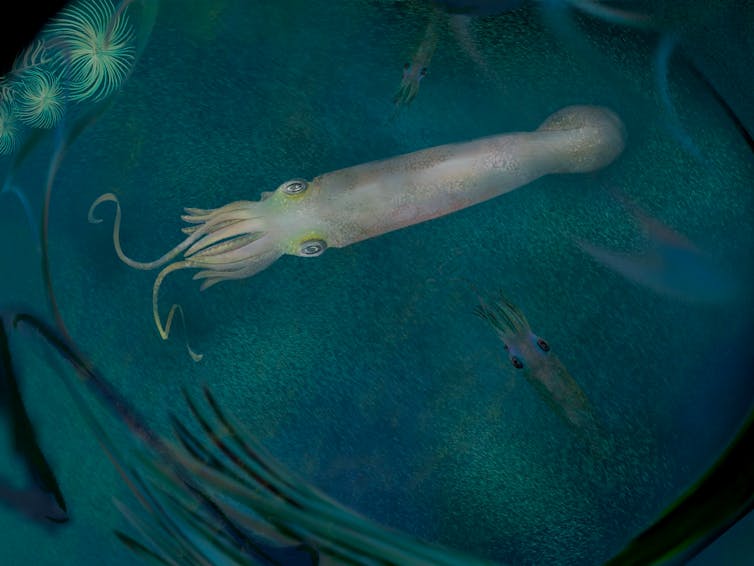
In an ancient shallow bay of what is now Montana, the body of an octopus-like creature the size of a fist was buried on the seafloor. Some 325-328 million years later, a new paper published in Nature Communications provides some interesting insights into this mysterious and ancient cephalopod.
Syllipsimopodi bideni is small (about 12cm in length), has ten arms, suckers, fins, and a triangular pen of hard tissue inside its body for support. It’s a unique find because “squishy” animals tend to degrade quickly after death and therefore rarely make good fossils.
We don’t know when this unusual fossil was discovered, but in 1988 it was donated to the Royal Ontario Museum in Canada. It would sit largely ignored for more than 30 years until American palaeontologists Christopher Whalen and Neil Landman decided to study it.
The researchers have named the species Syllipsimopodi bideni after Joe Biden, the 46th president of the United States. Biden had just been inaugurated when the study was submitted for publication, and the authors wanted to recognise his commitment to science.
Cephalopods are some of the most diverse and fascinating molluscs on our planet. They have conquered every ocean, survived the five biggest extinctions in Earth’s history, and today number around 800 species.
Octopuses and squids are among the most familiar cephalopods, but also in this group are cuttlefishes, nautilus and the extinct belemnites, ammonites and others. Their economic and cultural importance is immense, and their ecological roles are vital for healthy oceans.
An Exceptional Fossil
Ammonites and their relatives are important tools for geologists, who use the unique patterns on their tough coiled shells to identify layers of rock around the world. But the fossil record for cephalopods without shells is a stark contrast, because when these animals die the flesh of their bodies usually rots away, leaving very little, if anything, behind. Sadly, we will probably never know about the vast majority of species that existed, let alone what their relationships were to one another.
Some help has come from genetic studies that have defined two major living groups: the squid relatives and the octopus relatives. But genetic material cannot be extracted from fossils that may be hundreds of millions of years old, so the full story of their evolution has remained unresolved.
Under special chemical and environmental conditions, the soft parts of an animal can be preserved in the rock. The Bear Gulch Limestone fossil site (where this new species was found) is famous for this kind of preservation and provides incredibly rare insights about these animals. This allowed Whalen and Landman to describe important parts of the new species’ anatomy, which give clues about its identity.

Vampires From Hell
The authors suggest that Syllipsimopodi bideni’s features make it the oldest member of a group called the vampyropods. This is the group of cephalopods that includes modern octopuses and the “vampire squid”.
While octopuses will be familiar to you, the vampire squid may not. There is a single surviving species, Vampyroteuthis infernalis, whose name means “vampire squid from hell”, despite being more closely related to octopuses.
Vampyroteuthis infernalis lives a quiet life, drifting in deep oceans around the world in waters almost devoid of oxygen and in pitch darkness. It is perhaps unworthy of its fearsome name.
Notably, the vampire “squid” has primitive features in common with this new species Syllipsimopodi bideni, such as ten limbs and a stiff internal shell. No living octopus has either of these.
Until now, it was thought that the vampyropods (octopus relatives) originated in the Triassic period around 240 million years ago. But this new species pushes that back a further 82 million years, which is more time than separates humans from Tyrannosaurus rex.
A Day In The Life
Beyond what this fossil can tell us about cephalopod evolution, the authors also investigated the animal’s ecology. Shaped like a torpedo, the creature probably used jet-propulsion to move through the water (like many living cephalopods), and the rounded fins on either side of its body for stability.
One pair of arms is longer than the others, suggesting they were used to catch prey, while the suckers may have helped it manipulate its food. It is fascinating that while Syllipsimopodi bideni was more closely related to the octopuses, it probably lived in a similar way to true squid today.
While the full picture of cephalopod evolution is still murky, this fossil is a fascinating and exciting new piece of the puzzle.![]()
Tom Fletcher, Honorary Research Fellow in Palaeobiology, University of Leicester
This article is republished from The Conversation under a Creative Commons license. Read the original article.
NSW Residents In Hospital With Japanese Encephalitis
March 7-10, 2022
NSW Health can confirm two people with Japanese encephalitis virus (JEV) are currently being treated in hospital and is continuing to urge the public to be vigilant and safeguard themselves against mosquito bites.
Both people are residents of the NSW-Victoria border region – a man from the Corowa area and a child from the Wentworth area in the far south west of NSW. They are both currently being treated in hospitals in Victoria. The man remains in a serious condition in ICU. The child has been discharged from ICU but continues to receive hospital care due to the serious nature of their illness.
On March 9, sadly, NSW Health can confirm a man from the Griffith region who was aged in his 70s died in a Sydney hospital on February 13. Post-mortem testing subsequently found he had contracted the JE virus, which was confirmed today (Wednesday). NSW Health expresses its sincere condolences to his loved ones.
A fourth NSW resident was confirmed to have Japanese encephalitis (JE) on Thursday, March 10.
Several more people in NSW are undergoing further testing for JE, and more cases are expected to be confirmed over the coming days and weeks.
Locally acquired cases of JE have never previously been identified in NSW in animals or humans. Since late February 2022, the JE virus has been confirmed in samples from pig farms in NSW, Queensland, Victoria and South Australia.
JEV is a viral illness spread by mosquitoes. It can infect animals and humans and has been confirmed in samples from a number of pig farms in regional NSW.
The virus cannot be transmitted between humans, and it cannot be caught by eating pork or pig products. Locally acquired cases of JEV have never previously been identified in NSW in animals or humans.
Mosquito control activities are being carried out in the vicinity of farms where pigs are confirmed to have been infected by JEV and NSW Health is arranging vaccination of workers on affected farms.
There is no specific treatment for JEV, which can cause severe neurological illness with headache, convulsions and reduced consciousness in some cases.
Dr Marianne Gale, NSW Health Acting Chief Health Officer, said the best thing people throughout the state can do to protect themselves and their families against JEV is to take steps to avoid mosquito bites.
“We are working closely with the NSW Department of Primary Industries and other states and territories to determine the extent to which the virus is circulating,” Dr Gale said.
‘Unfortunately, our recent wet weather has led to very high mosquito numbers, so we need the community to be particularly vigilant and take steps to avoid mosquito bites.
“We know mosquitoes are most active between dusk and dawn, and we need people planning activities near waterways or where mosquitoes are present to be especially cautious, particularly those in the vicinity of the Murray River and its branches.”
Simple actions you can take to avoid mosquito bites include:
- Avoid going outdoors during peak mosquito times, especially at dawn and dusk.
- Wear long sleeves and pants outdoors (reduce skin exposure). Also wear shoes and socks where possible. There are insecticides (e.g. permethrin) available for treating clothing for those spending extended periods outdoors.
- Apply repellent to all areas of exposed skin, especially those that contain DEET, picaridin, or oil of lemon eucalyptus which are the most effective against mosquitoes. The strength of a repellent determines the duration of protection with the higher concentrations providing longer periods of protection. Always check the label for reapplication times.
- Reapply repellent after swimming. The duration of protection from repellent is also reduced with perspiration, such as during strenuous activity or hot weather so it may need to be reapplied more frequently.
- Apply the sunscreen first and then apply the repellent. Be aware that DEET-containing repellents may decrease the sun protection factor (SPF) of sunscreens so you may need to re-apply the sunscreen more frequently.
- For children in particular - most skin repellents are safe for use on children aged three months and older when used according to directions, although some formulations are only recommended for children aged 12 months and older - always check the product. Infants aged less than three months can be protected from mosquitoes by using an infant carrier draped with mosquito netting that is secured along the edges.
- Be aware of the peak risk times for mosquito bites. Avoid the outdoors or take preventive actions (such as appropriate clothing and skin repellent) between dawn and dusk when most mosquitoes become active, especially close to wetland and bushland areas.
- If camping, ensure the tent has fly screens to prevent mosquitoes entering.
- Mosquito coils and other devices that release insecticides can assist reducing mosquito bites but should be used in combination with topical insect repellents.
- Reduce all water holding containers around the home where mosquitoes could breed. Mosquitoes only need a small amount of liquid to breed.
Fact sheets on specific mosquito-borne diseases, including Japanese encephalitis Ross River virus and Barmah Forest virus, are available at Vector borne disease fact sheets.
$69 Million For Japanese Encephalitis Virus (JEV) Response
- $28.18 million to purchase additional JEV vaccines – to be available from late March and into April
- $17.5 million to support jurisdictions with mosquito surveillance and control activities
- $5 million for public health communication to ensure people are aware of risk and how to prevent infection
- $3.5 million for essential supplies to ensure sustained laboratory capacity and capability to test for JEV in humans
- $4 million to support enhance surveillance activities, such as modelling, geospatial analysis and conducting a serosurvey to better understand and map areas with higher risk of a JEV outbreak
- $10 million for DAWE will enable support to state and territory agriculture departments in their response to this emergency including surveillance.
Landmark Agreement Begins A New Era For Mental Health Care In NSW
- $121.3 million for universal aftercare services in New South Wales to support individuals following a suicide attempt and / or suicidal crisis.
- $106.1 million will be invested into headspace to substantially expand and enhance services, ensuring it can reach more young people across the state.
- $84.5 million to establish 14 new adult Head to Health treatment centres, including five new centres and nine satellite centres across the state.
- $35.9 million to establish Head to Health Kids Hubs to improve access to multidisciplinary team care for children
- $15.7 million to improve perinatal mental health screening and enhance capture and reporting of national consistent perinatal mental health data.
- $14.7 million to ensure all people in New South Wales who are bereaved or impacted by suicide can access postvention support services.
- $4.9 million to implement a Distress Intervention Trial Program to prevent and reduce suicidal behaviour.
National Science Week 2022 Grants Announced: NSW Events List
- The Northern Prawn Fishery in Darwin, Northern Territory
- Goolwa Pipis Fishery in Adelaide, South Australia
- Geraldton Fishermen’s Co-operative Ltd in Geraldton, Western Australia
- Mures Tasmania in Hobart, Tasmania
Reading Builds Resilience Among At-Risk Kids; New Australian Study
More Alcohol=Less Brain: Association Begins With An Average Of Just One Drink A Day
Physicists Discover Method For Emulating Nonlinear Quantum Electrodynamics In A Laboratory Setting
The ‘Equal-Opportunity Jerk’ Defense: Rudeness Can Obfuscate Gender Bias
Global Warming Projected To Increase Health Burden From Hyponatremia
New Species Of Extinct Vampire-Squid-Like Cephalopod Is The First Of Its Kind With 10 Functional Arms
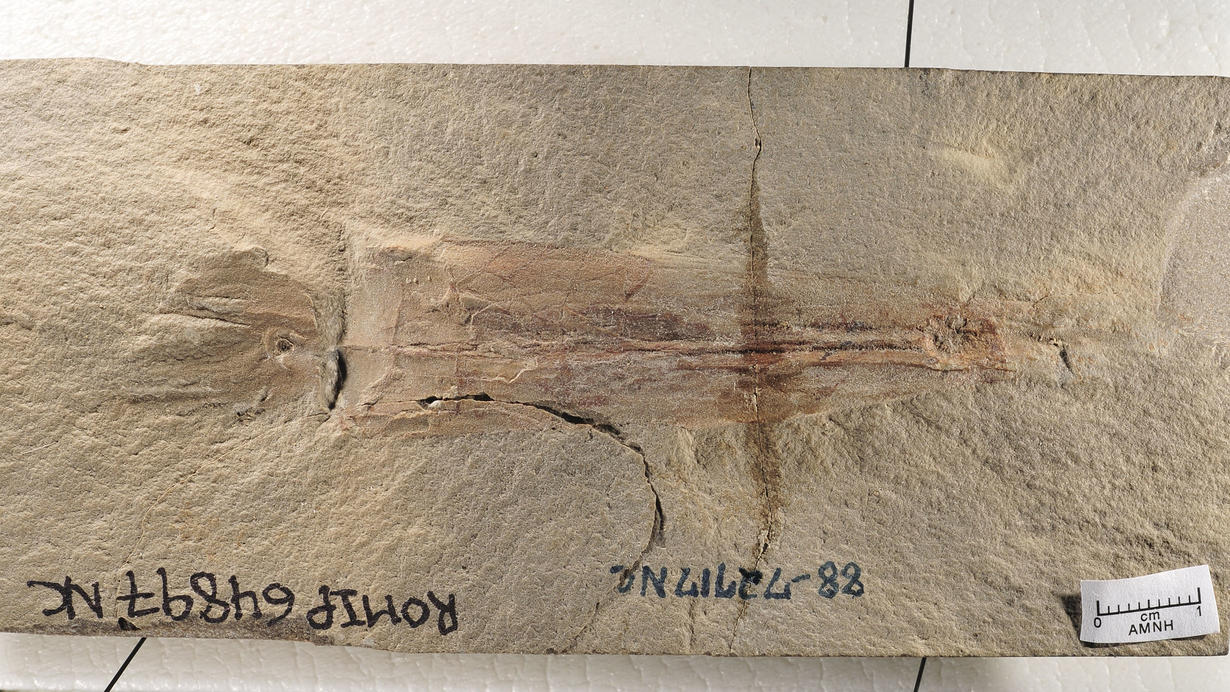
Disclaimer: These articles are not intended to provide medical advice, diagnosis or treatment. Views expressed here do not necessarily reflect those of Pittwater Online News or its staff.
